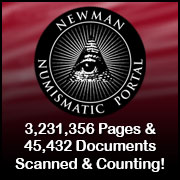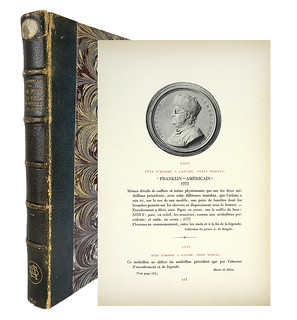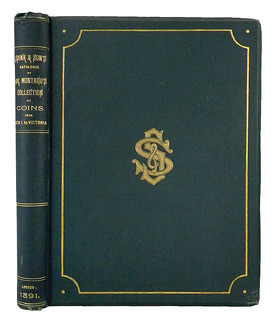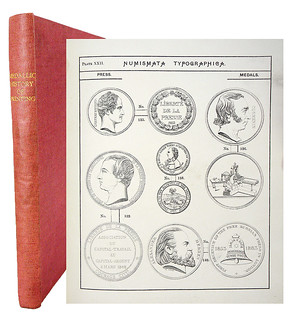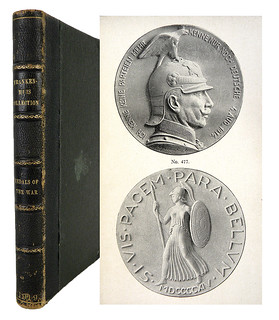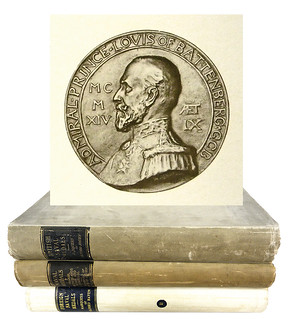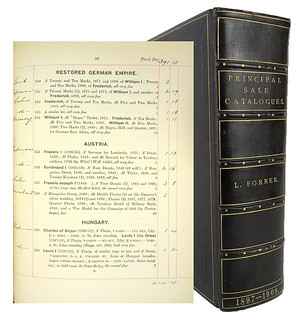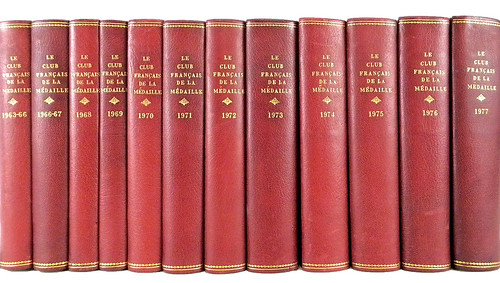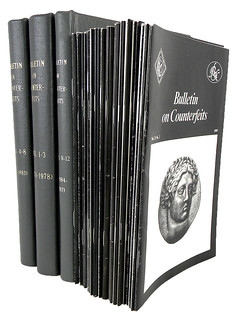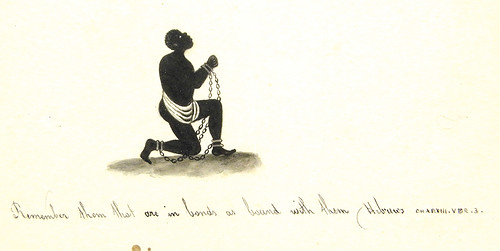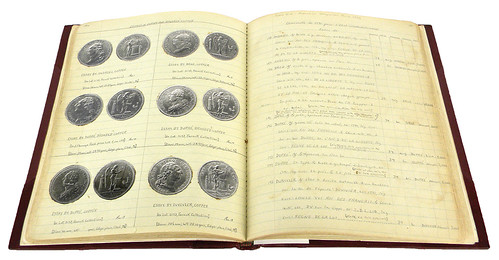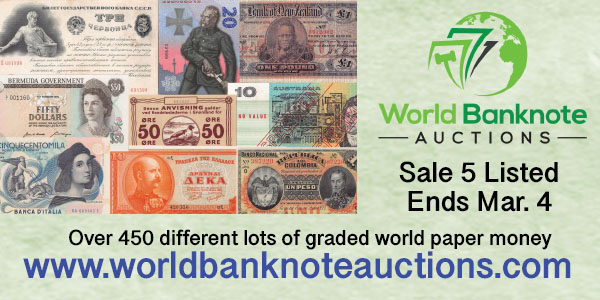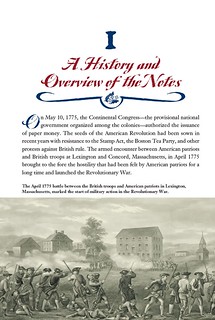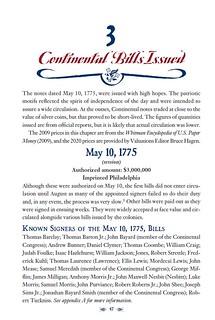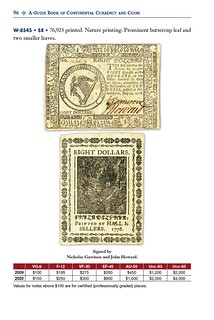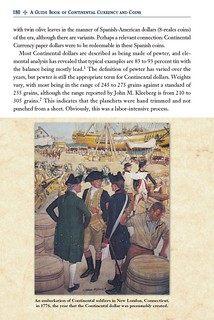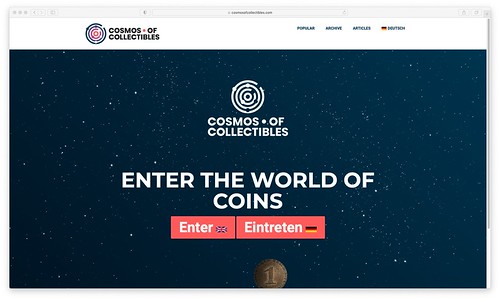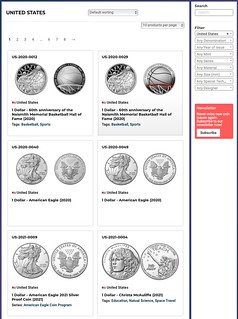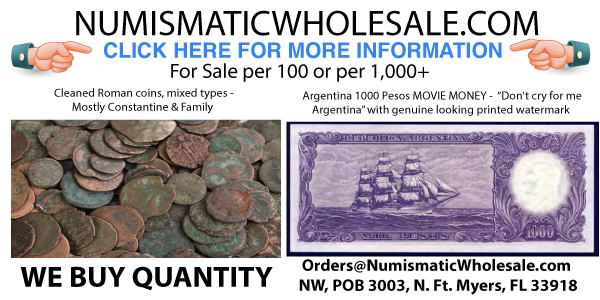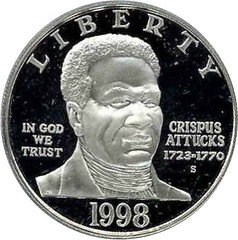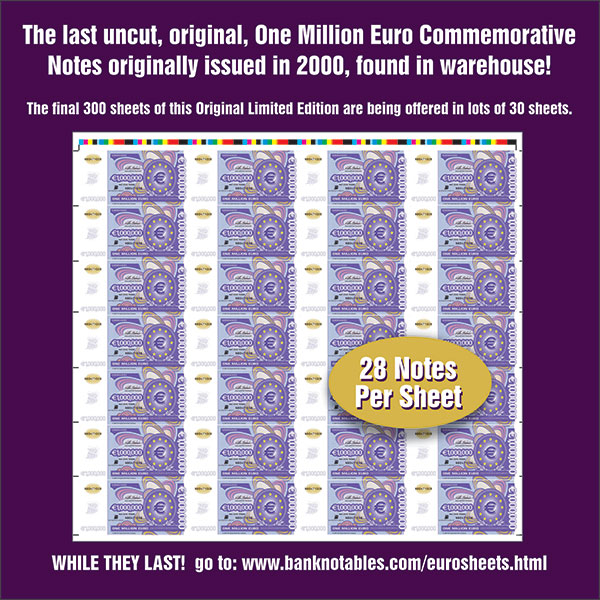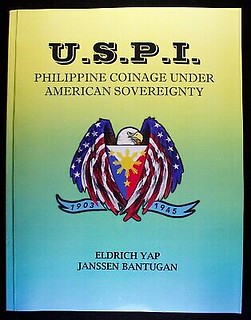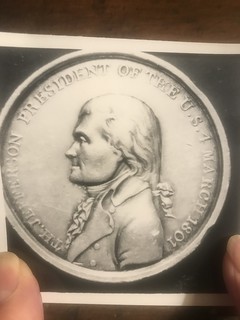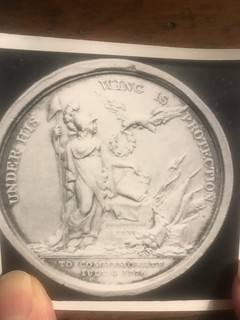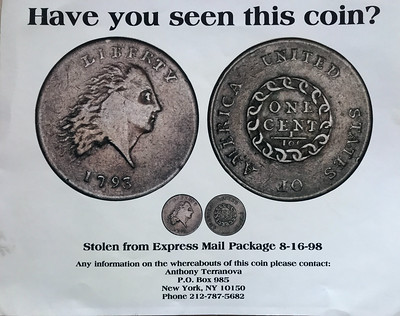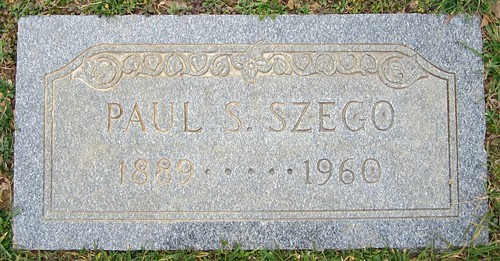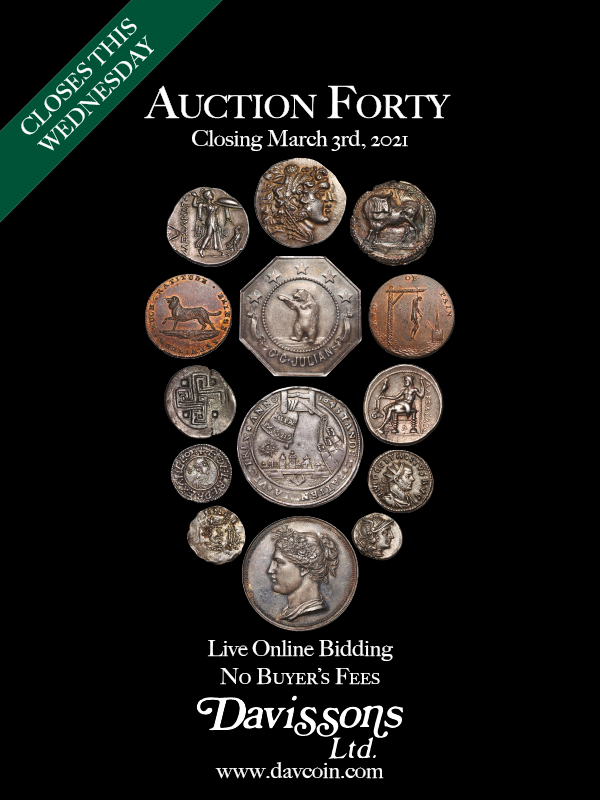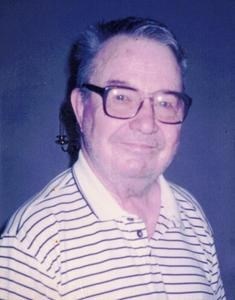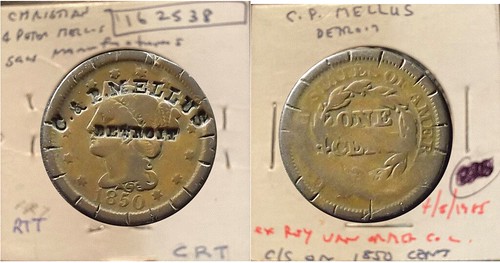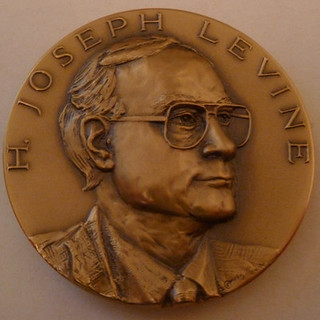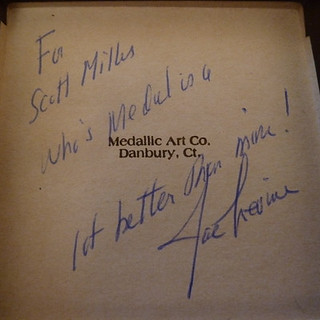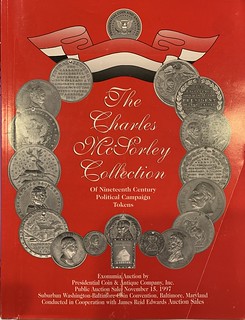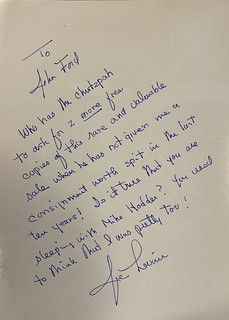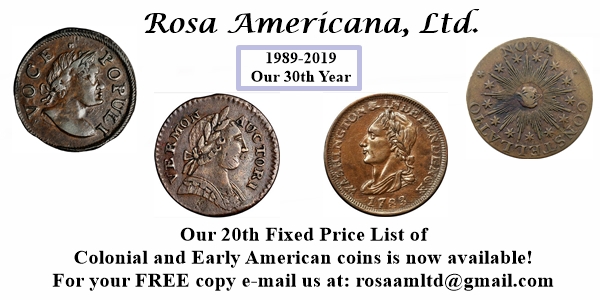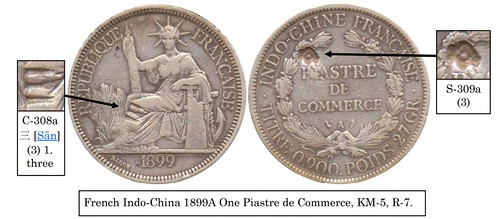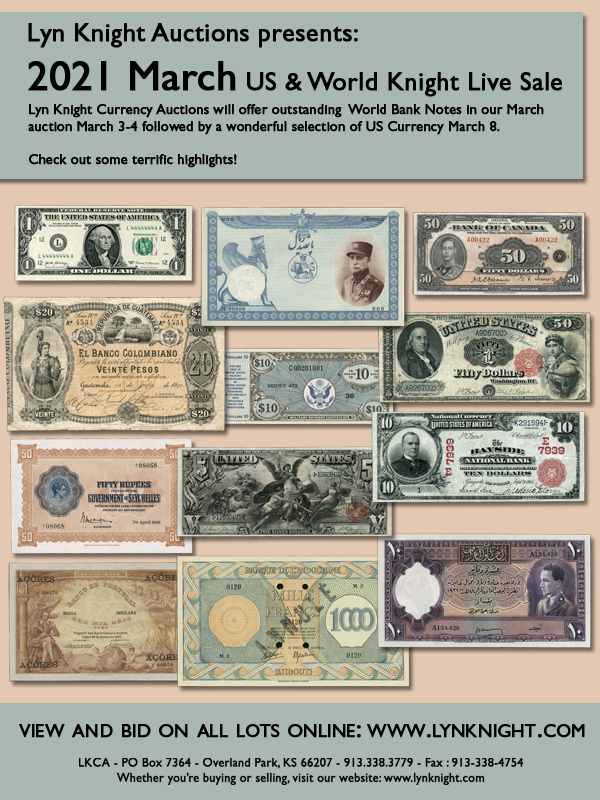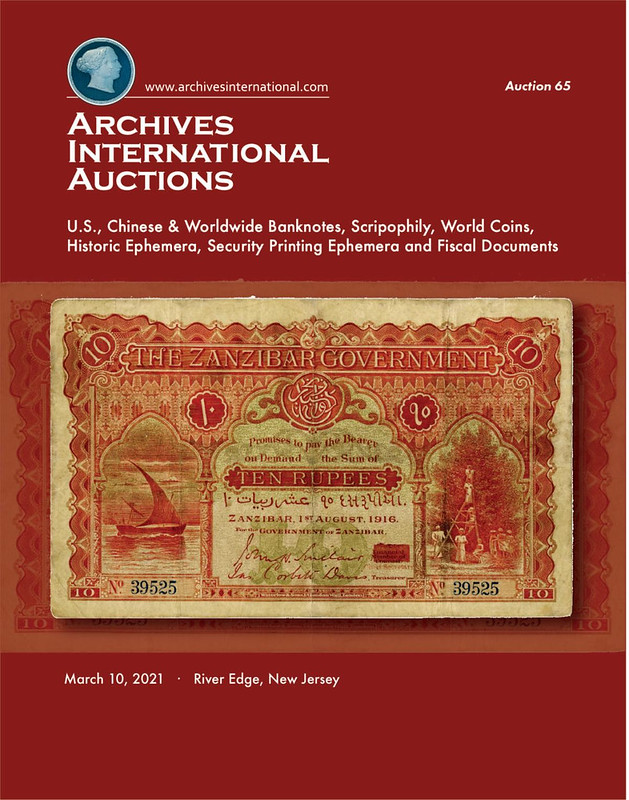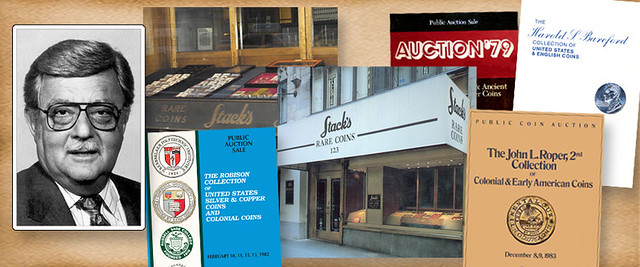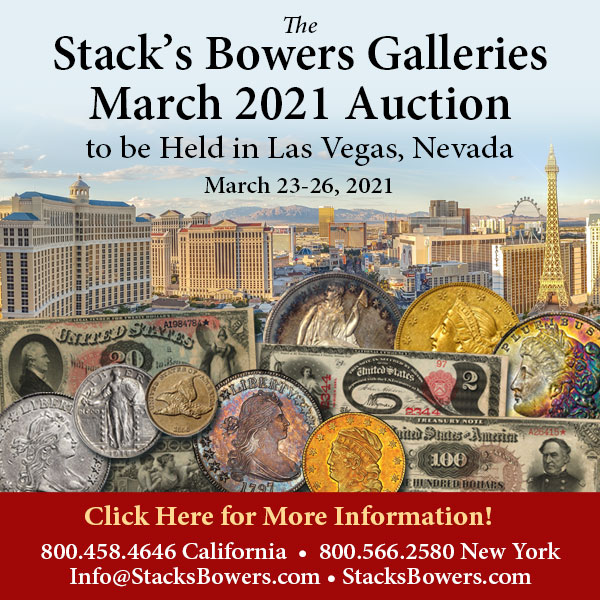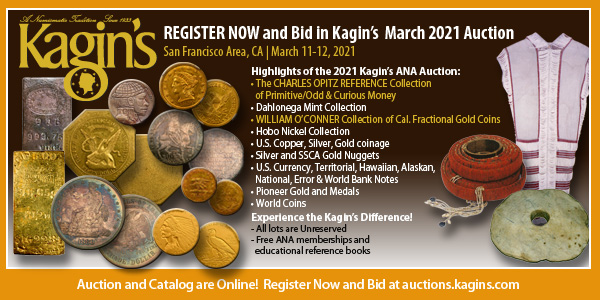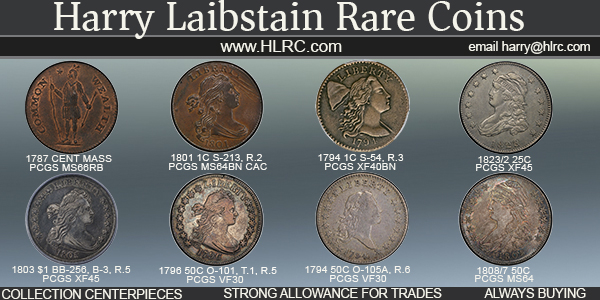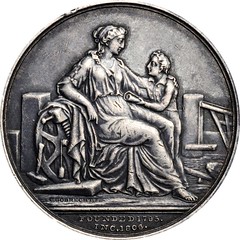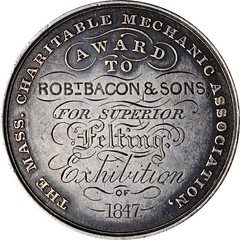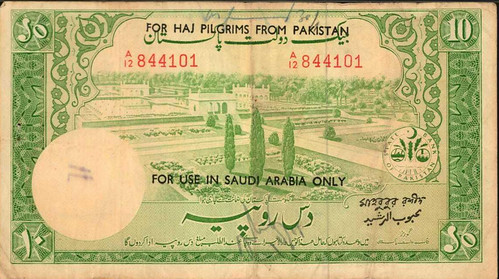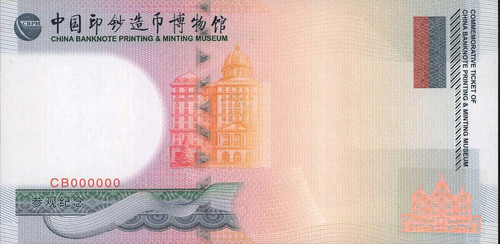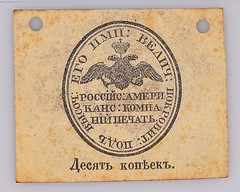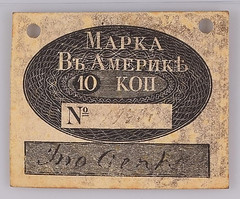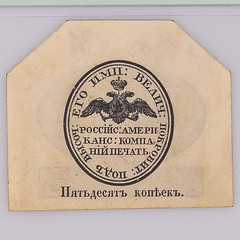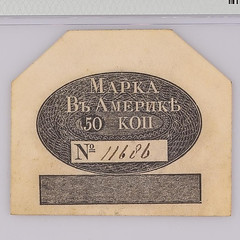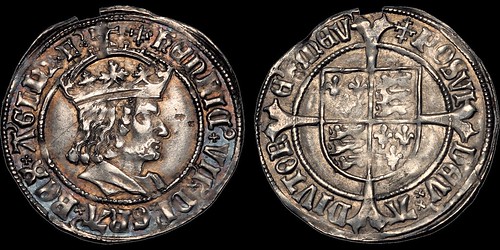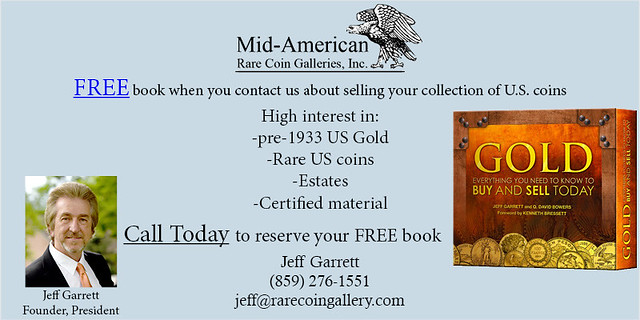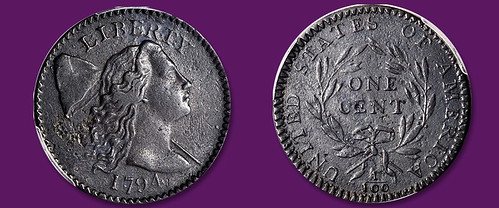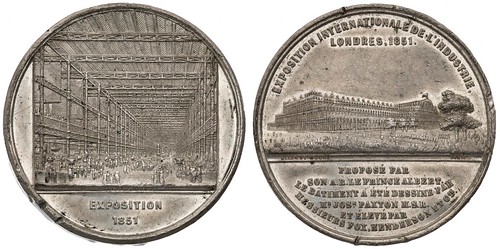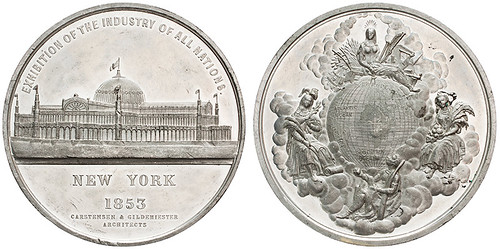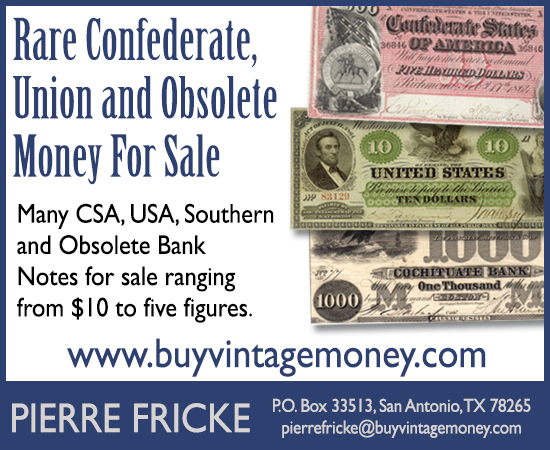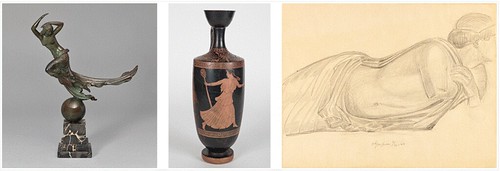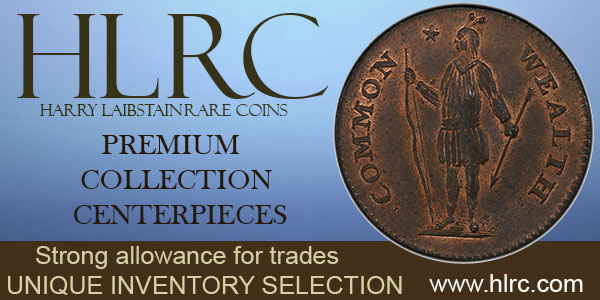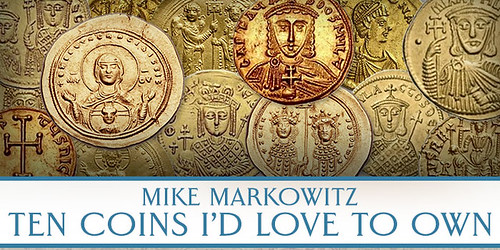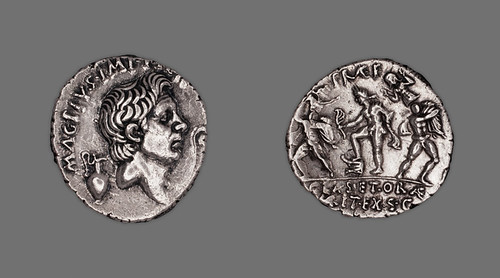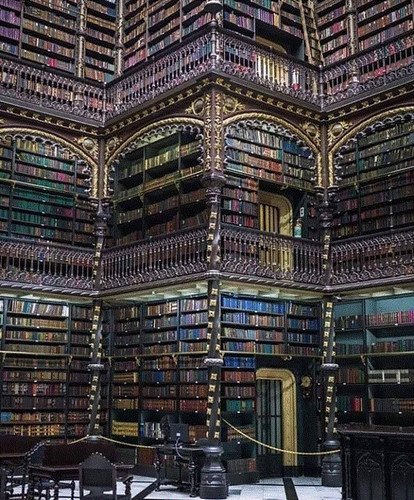
Visit our NBS Sponsors


About UsThe Numismatic Bibliomania Society is a non-profit association devoted to the study and enjoyment of numismatic literature. For more information please see our web site at coinbooks.org SubscriptionsThose wishing to become new E-Sylum subscribers (or wishing to Unsubscribe) can go to the following web page link MembershipThere is a membership application available on the web site Membership Application To join, print the application and return it with your check to the address printed on the application. Print/Digital membership is $40 to addresses in the U.S., and $60 elsewhere. A digital-only membership is available for $25. For those without web access, write to: Charles Heck, Treasurer AsylumFor Asylum mailing address changes and other membership questions, contact Chuck at this email address: treasurer@coinbooks.org SubmissionsTo submit items for publication in The E-Sylum, write to the Editor at this address: whomren@gmail.com BUY THE BOOK BEFORE THE COINSale Calendar |
- WAYNE'S WORDS: THE E-SYLUM FEBRUARY 28, 2021
- KOLBE & FANNING MARGOLIS SALE CLOSES MARCH 6
- ANS BULLOWA LIBRARY DUPLICATES OFFERED
- NEW BOOK: GERMAN ORDERS AND DECORATIONS
- NEW BOOK: COINKEEPER
- NEW COLUMN: HIDDEN TREASURES
- REVIEW: THE HALF CENT HANDBOOK
- REVIEW: GUIDE BOOK OF CONTINENTAL CURRENCY
- COSMOS OF COLLECTIBLES LAUNCHED
- PETER OSCAR WACKER (1936-2020)
- CRISPUS ATTUCKS IN NUMMIS
- VIDEO: HOUSTON YOUNG NUMISMATISTS
- MORE ON THE MANILA MINT
- MORE NOTABLE NUMISMATIC THEFTS
- MORE ON PAUL S. SZEGO
- NOTES FROM E-SYLUM READERS: FEBRUARY 28, 2021
- A NOT SO VALUABLE NUMISMATIC THEFT
- 2021 CENTRAL STATES SHOW CANCELLED
- 2022 NYINC NUMISMATIC MEDIA PANEL DISCUSSION
- SUBSCRIBER PROFILE: HOWARD A. DANIEL III
- VOCABULARY TERM: CORONATION MEDAL
- PIERRE EUGÈNE DU SIMITIÈRE (1737-1784)
- HARVEY STACK'S NUMISMATIC FAMILY, PART 90
- STACK'S BOWERS OPENS PHILADELPHIA GALLERY
- PCGS 35 YEARS ON
- COIN BOARDS: RATION TOKENS, GHOSTLY TONING
- INTRODUCING THE ANS LYCEUM
- NUMISMATIC NUGGETS: FEBRUARY 21, 2021
- ALASKAN RUSSIAN-AMERICAN
WALRUS SKIN
MONEY - HENRY VII'S MODERN TRIMMED BEARD
- SHELL BEAD MONEY IN CALIFORNIA
- 1794 STARRED-REVERSE CENT OFFERED
- CRYSTAL PALACE MEDALS
- PAUL MANSHIP EXHIBIT AT THE WADSWORTH
- THE HISTORY OF DIGITAL CURRENCIES
- THE ERA OF MILLION-DOLLAR SPORTS CARDS
- LOOSE CHANGE: FEBRUARY 28, 2021
- THE ROYAL PORTUGUESE CABINET OF READING
- FEATURED WEB SITE: MILITARY MEDALS
Click here to read the thin version on the web
Click here to subscribe
Click here to access the complete archive
To comment or submit articles, reply to whomren@gmail.com
Content presented in The E-Sylum is not necessarily researched or independently fact-checked, and views expressed do not necessarily represent those of the Numismatic Bibliomania Society.
WAYNE'S WORDS: THE E-SYLUM FEBRUARY 28, 2021
 New subscribers this week include:
Timothy W McAfee, courtesy Dave Bowers;
and Richard Knapp.
Welcome aboard! We now have 6,619 subscribers.
New subscribers this week include:
Timothy W McAfee, courtesy Dave Bowers;
and Richard Knapp.
Welcome aboard! We now have 6,619 subscribers.
Thank you for reading The E-Sylum. If you enjoy it, please send me the email addresses of friends you think may enjoy it as well and I'll send them a subscription. Contact me at whomren@gmail.com anytime regarding your subscription, or questions, comments or suggestions about our content.
I've often described the the process of emptying my email inbox as trying to drain a bathtub while the faucet is still running full force. This was one of those weeks where I felt like I was drowning. But I'm alive and well and here to present another weekly issue. Some great articles here, but a number of other goodies had to get left behind. Most should appear in next week's issue.
This week we open with two numismatic literature sales, three new books. two reviews, a new numismatic website, an obituary, updates from the Newman Numismatic Portal, and more.
Other topics this week include Half Cents, Continental Currency, the Manila Mint, notable numismatic thefts, Paul S. Szego, Howard Daniel, Paul Manship, Coronation medals, the founding of PCGS, ration tokens, shell bead money, the 1794 starred reverse cent, and military medals.
To learn more about the orders and decorations of Germany, metal-detecting finds, Crispus Attucks, Sophia Banks, Thomas Jefferson's inaugural medal, the Coles collection, Pakistan State Bank 10 Rupees Haj Issue and Walrus skin money, read on. Have a great week, everyone!
Wayne Homren
Editor, The E-Sylum
KOLBE & FANNING MARGOLIS SALE CLOSES MARCH 6
Here's a final reminder of the upcoming Kolbe & Fanning sale of the numismatic library of dealer Richard Margolis. -Editor
MARGOLIS LIBRARY SALE CLOSES THIS SATURDAY
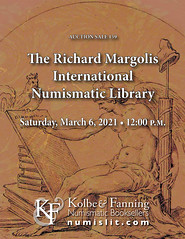 Kolbe & Fanning Numismatic Booksellers will be offering highlights from the Richard E. Margolis International Numismatic Library at auction this Saturday, March 6. The Margolis Library is comprehensive for world coins, medals and paper money, and features significant art and archival materials as well. The 539-lot sale is one of the most important auctions of numismatic literature to be offered in recent years.
Kolbe & Fanning Numismatic Booksellers will be offering highlights from the Richard E. Margolis International Numismatic Library at auction this Saturday, March 6. The Margolis Library is comprehensive for world coins, medals and paper money, and features significant art and archival materials as well. The 539-lot sale is one of the most important auctions of numismatic literature to be offered in recent years.
Some highlights of the sale include:
Lot 164: A. Storelli's very rare 1896 work on Jean-Baptiste Nini, the most important 19th-century study of the artist
Lot 217: a well-preserved copy of Spink & Son's 1890 catalogue of Hyman Montagu's English milled coins, patterns and proofs
Lot 243: an original copy of William Blades's rare Numismata Typographica, his landmark 1883 study of medals relating to printing and the book arts
Lot 248: the rare English-language edition of Maurice Frankenhuis's highly important Catalogue of Medals, Medalets and Plaques Relative to the World War, 1914–1919
Lot 255: a complete set of Admiral Louis Mountbatten's (the Marquess of Milford Haven's) medallic history of the world's navies, an encyclopedic work that remains unrivalled
Lot 451: a handsomely bound volume of ancient coin auction catalogues, mostly priced and named, written by Leonard Forrer and from his library
Lot 479: a finely bound set of the Club Français de la Médaille's Bulletin
Lot 483: a complete set of the Bulletin on Counterfeits, published by the International Bureau for the Suppression of Counterfeit Coins
Lot 515: a finely rendered 19th-century ink drawing of Wedgwood's famous Am I Not a Man and a Brother?
design used by the Society for the Purpose of Effecting the Abolition of the Slave Trade
Lot 530: Richard Margolis's handwritten notes on the Monetary Competition of 1791, largely unpublished, encompassing two notebooks with over 240 pages of material.
Bids may be placed via post, email, fax or phone, as well as online. Kolbe & Fanninguse Auction Mobility as our third-party online bidding platform. Auction Mobility is an app-based platform allowing users the ability to participate in the sale through phones, tablets and computers. To register for the sale, bidders must go to bid.numislit.com and sign up. Once you have set up an account, you may browse lots, place advance bids, or participate in the live sale online; you may also sort items by relevant category.
Those wishing to participate on their devices can download the Kolbe & Fanning app through the Apple or Google Play Store. The sale is also listed on Biddr and NumisBids and absentee bids may be submitted through those platforms.
The printed catalogue of the Margolis Library has been mailed to all active customers on our mailing list. As international mail speeds have been slowed by the Corona situation, we encourage our international clients to consult the electronic catalogue in case their printed catalogue does not arrive promptly. A PDF of the printed catalogue has been posted to our main website at numislit.com for those who prefer that format. Bids placed via post, email, fax or phone must be received by March 5, the day before the sale, in order for them to be processed. Advance absentee bids may also be placed at any time online at bid.numislit.com. Live internet bidding will be available during the sale itself through the same platform.
Kolbe & Fanning Numismatic Booksellers LLC is a licensed and bonded auction firm in the State of Ohio. For more information, please see the Kolbe & Fanning website at numislit.com or email David Fanning at df@numislit.com. To register for the sale, go to bid.numislit.com. We look forward to your participation.
To read the earlier E-Sylum articles, see:
KOLBE & FANNING RICHARD MARGOLIS LIBRARY SALE
(https://www.coinbooks.org/v24/esylum_v24n06a02.html)
KOLBE & FANNING MARGOLIS LIBRARY HIGHLIGHTS
(https://www.coinbooks.org/v24/esylum_v24n07a02.html)
MORE KOLBE & FANNING MARGOLIS HIGHLIGHTS
(https://www.coinbooks.org/v24/esylum_v24n08a03.html)
ANS BULLOWA LIBRARY DUPLICATES OFFERED
The American Numismatic Society is offering a new group of library duplicates for sale. -Editor
Library Duplicates on the ANS eBay store
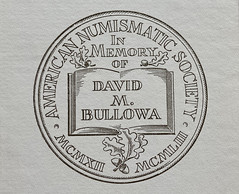 The sale of library duplicates through our eBay store has been a great success, raising much-needed funds for the ANS Library. This week we will begin offering duplicates from the David Bullowa Library, which covers virtually the entire world of numismatics through the mid-twentieth century. On Thursday, March 4, we will start by offering Akerman's Tradesmen's Tokens (1849), Prime's Coins, Medals and Seals (1861), Leopold and Trübner's Current Gold and Silver Coins (1863), Gilbert and Elder's Cents of 1796 (1909), and Poole's Catalogue of Masonic Medals (1939). All bidding starts at $1.
The sale of library duplicates through our eBay store has been a great success, raising much-needed funds for the ANS Library. This week we will begin offering duplicates from the David Bullowa Library, which covers virtually the entire world of numismatics through the mid-twentieth century. On Thursday, March 4, we will start by offering Akerman's Tradesmen's Tokens (1849), Prime's Coins, Medals and Seals (1861), Leopold and Trübner's Current Gold and Silver Coins (1863), Gilbert and Elder's Cents of 1796 (1909), and Poole's Catalogue of Masonic Medals (1939). All bidding starts at $1.
Great opportunities! There are some nice coins, medals and tokens available as well. Check it out. -Editor
To Visit the ANS eBay store, see:
https://www.ebay.com/sch/american-numismatic-society/m.html
NEW BOOK: GERMAN ORDERS AND DECORATIONS
Battenberg Verlag has published a new edition of their book on the orders and decorations of Germany. Here's the Google-translated description. It's available for preorders with expected availability in April. -Editor
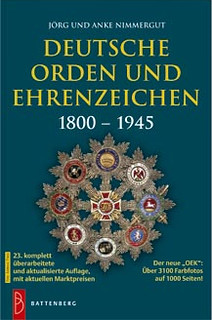 Deutsche Orden und Ehrenzeichen 1800 – 1945 (OEK) NEUAUFLAGE 2021
Deutsche Orden und Ehrenzeichen 1800 – 1945 (OEK) NEUAUFLAGE 2021
German orders and decorations 1800 - 1945 (OEK) NEW EDITION 2021
Anke Nimmergut | Jörg Nimmergut
Published by Battenberg Verlag
ISBN: 978-3-86646-201-4
Edition: 23rd edition 2021
Images: color images throughout
Softcover: approx. 1000 pages
Format: 12.5 x 19 cm
Whether at auctions, when visiting collectors' fairs or flea markets: The Germany catalog, known as OEK
, is always a useful guide and an indispensable reference work. As the only complete catalog of German orders and decorations for this period, the OEK
has proven itself for over 40 years and is considered the standard work for German orders and decorations from 1800 until the end of the Third Reich. It contains almost 4,100 numbers, including over 600 numbers in the Third Reich alone. With more than 300 new color illustrations, the current 23rd edition has again been extensively updated, expanded and provided with the latest market prices. With the cooperation of well-known collectors, auction houses and dealers, the OEK
has long been fulfilling the claim to be made by collectors for collectors and to be a mirror of the market.
For more information, or to order, see:
Deutsche Orden und Ehrenzeichen 1800 – 1945 (OEK) NEUAUFLAGE 2021
(https://www.battenberg-gietl.de/sammeln/buch/deutsche-orden-und-ehrenzeichen-1800-1945-oek-neuauflage-2021)
NEW BOOK: COINKEEPER
A local newspaper profiled a Vancouver Island, British Columbia, Canada author of coin-themed books for children. -Editor
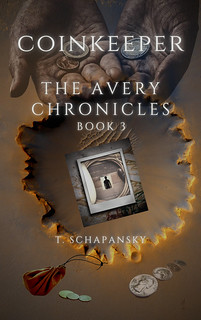 Lake Cowichan product Teresa Schapansky is being recognized for making a difference in the lives of young readers.
Lake Cowichan product Teresa Schapansky is being recognized for making a difference in the lives of young readers.
The award-winning Duncan-based author learned of a need for low-level readers in the classroom and set to work writing a series that not only provides good access to books for youth aged nine to 12 with lower levels of reading, but to capture their attention with magic and wonder.
The result? The first two books of Schapansky's Coinkeeper – The Avery Chronicles series have reached No. 1 on Amazon's Hot New Releases section. It's not the first time her work has seen the top of the charts.
Some Christmas, an entirely different series altogether, reached No. 2 of Hot New Releases in about a week,
Schapansky noted. It was written for the adolescent struggling reader. Then I released the Coinkeeper – Book 1 and overnight it went to No. 1 of the Hot New Releases, which is just crazy, crazy, crazy. Book 2 of the Coinkeeper series followed and that was No. 1 as well. All of a sudden they were both best-sellers. I'm in disbelief.
Schapansky's Coinkeeper series is a fictional fantasy adventure that follows a grandson and his grandfather through time and space via the use of magic coins. There are three books in the self-published series, all written since December, 2020. She's busy working on a fourth, with more to follow.
Ingram went on to explain to Schapansky that there's a lack of material in classrooms for children aged nine to 12 that struggle to read.
That's how it came about in December,
she said. So I just got my pencil sharpened. We know that there are many different reasons that kids and adults struggle to read, but a lot of kids don't want to be faced with a great big encyclopedia-like book.
She did her research, too. I reached out to various people and organizations for the purpose of each of the Coinkeeper books, and was completely blown away, amazed and very flattered by the responses,
she said. The Bank of Canada Museum provided historical value information about the 1911 Canadian silver dollar and the Royal Mint Museum provided images of the 1911 Canadian silver dollar. The Sncwips Heritage Museum provided historical and invaluable cultural information about the syilx First Nations and in particular, the water spirit. The American Numismatic Society provided information and photographs of and about the 1861 Confederate Half Dollar, and more.
To read the complete article, see:
Cowichan author tops Amazon charts
(https://www.cowichanvalleycitizen.com/entertainment/cowichan-author-tops-amazon-charts/)
For more information, or to order, see:
Coinkeeper - The Avery Chronicles: Book 3 Paperback - February 2, 2021
(https://www.amazon.com/-/es/Teresa-Schapansky/dp/1988024129/ref=sr_1_1)
NEW COLUMN: HIDDEN TREASURES
Frank Colletti is launching a new regular column over on Coin Update. We'll look forward to it. Here's the press release. -Editor
 A new metal-detecting and coin-collecting column by award-winning author Frank J. Colletti will debut on Monday, March 1, 2021. The column,
A new metal-detecting and coin-collecting column by award-winning author Frank J. Colletti will debut on Monday, March 1, 2021. The column, Hidden Treasures,
will appear in Coin Update (www.coinupdate.com) every other week.
Frank Colletti, a Certified Public Accountant, is known to the numismatic community as a specialist and collector of the Guide Book of United States Coins, popularly known as the Red Book.
He wrote the Guide Book of the Official Red Book of United States Coins (Whitman Publishing, 2009), a reference for book collectors, which Kenneth Bressett has called a fascinating account with a wealth of information.
Colletti follows the market for rare and special-edition Red Books and regularly advises on pricing and rarity.
The longtime collector became interested in coins in 1962, when he received a Barber quarter (last minted in 1916) in payment on his newspaper-delivery route. His interest in metal-detecting is also longstanding, and he has written hundreds of related articles in various hobby publications, including Lost Treasure magazine. He wrote monthly columns on coin collecting (Money Talks
) and on the good deeds that metal detectorists perform (Civic Patrol
).
The hobbies of treasure-hunting and coin-collecting are richly connected,
says Colletti. Metal detectorists often locate scarce and unusual coins, and we should be knowledgeable about our finds. As you learn more about coins, you become better equipped to form a nice collection, rather than just a random accumulation. And if you're already an active coin collector, you can enter an exciting new world by learning the ins and outs of hands-on treasure hunting.
Whitman publisher Dennis Tucker has seen growing interest in metal-detecting over the past year. We published the second edition of Dave Bowers's Lost and Found Coin Hoards and Treasures in the winter of 2019,
Tucker says. The book was featured in social media and got coverage from the American Numismatic Association and the hobby publications. Then it started to gain more attention from metal detectorists. In five weeks I received nearly 400 Facebook friend requests from treasure-hunters who were interested in the book. There are active communities online, where detectorists share information and inspire each other to keep looking for the next big treasure.
Colletti joins a regular lineup of Coin Update columnists including Q. David Bowers, Michael Alexander, Louis Golino, and Michael Bugeja. News articles, market commentary, Mint reports, and opinion pieces on U.S. and world coins, medals, tokens, and paper money are published daily at www.coinupdate.com.
REVIEW: THE HALF CENT HANDBOOK
Kevin Vinton of Stack's Bowers Galleries submitted this capsule review of Ed Fuhrman's new book on the Half Cents of 1800-1808. Thanks. -Editor
Book Review
The Half Cent Handbook, Draped Bust Varieties 1800-1808 by Ed Fuhrman
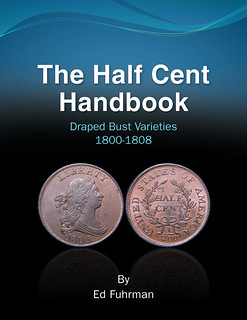 Fuhrman's handbook is a welcome new addition to the half cent literature that is as technically masterful as it is light and enjoyable for beginners and experts alike. That combination is a rare feat for this genre, something that could only be accomplished by someone who has lived and breathed a series for decades, as both a collector and a student, the way that Ed has. The book covers many important topics of interest to specialized collectors – grading, attribution, rarity estimates, counterfeit detection. There are also in-depth descriptions of die states for each variety which are an improvement and expansion on the Manley book, the previous standard reference on this topic.
Fuhrman's handbook is a welcome new addition to the half cent literature that is as technically masterful as it is light and enjoyable for beginners and experts alike. That combination is a rare feat for this genre, something that could only be accomplished by someone who has lived and breathed a series for decades, as both a collector and a student, the way that Ed has. The book covers many important topics of interest to specialized collectors – grading, attribution, rarity estimates, counterfeit detection. There are also in-depth descriptions of die states for each variety which are an improvement and expansion on the Manley book, the previous standard reference on this topic.
In addition to all this, what really separates Fuhrman's book from other treatments of the series is the wealth of fascinating anecdotes, personal experiences, and valuable cherry picking tips
for the rare varieties. Those who know Ed know he is one of the all-time greats of cherry picking half cent rarities, and his generous advice on this topic alone is more than worth the price of admission. The Half Cent Handbook, Draped Bust Varieties 1800-1808, along with Fuhrman's future volumes covering the rest of the half cent series, will no doubt become a valuable and
oft-referred-to addition to any half cent collector's library, and will likely also be responsible for creating many new enthusiasts of these fascinating coins.
The color photos of die states are a great resource, as are the author's recommendations about cherrypicking - spotting unrecognized rare varieties in dealer inventories. It's very nicely designed and produced. The book fails my back-of-the-book test though, not having an index or bibliography. For example, it mentions Roger Cohen's work, but doesn't state the title, when it was published, etc. But it's not meant for researchers and bibliophiles - as the title states it's a handbook of useful information for active buyers, and I expect to see copies floating around bourse floors when the major shows resume. -Editor
To read the earlier E-Sylum article, see:
NEW BOOK: THE HALF CENT HANDBOOK
(https://www.coinbooks.org/v24/esylum_v24n08a06.html)
REVIEW: GUIDE BOOK OF CONTINENTAL CURRENCY
Here's a great review by Christopher McDowell of the new Whitman Guide Book of Continental Currency and Coins by Dave Bowers. -Editor
The Guide Book of Continental Currency and Coins, the latest Whitman Publishing book by Q. David Bowers, debuts March 2, 2021. The 288-page book is volume 25 in the popular Bowers Series of numismatic references. It will be available from bookstores and hobby shops and online (including at Whitman.com) for $19.95. Here, Journal of Early American Numismatics editor Christopher R. McDowell explores the importance of the new book.
In Praise of Bowers's Unique Study of Revolutionary Currency
The Latest Whitman Guide Book Illuminates the Financing of America's Independence
by Christopher R. McDowell
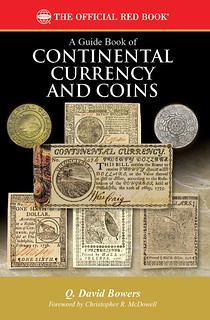 The Guide Book of Continental Currency and Coins brings together all of the national currency and coins of the American Revolutionary period in one place for the first time. The diversity of numismatic materials produced during this time in our nation's history is unequalled. It was a time of bold experimentation in everything from paper to designs. Nothing was yet fixed; every motto, legend, image, and word was new and significant. Some ideas were better than others, but practicality and the exigencies of the moment often, but not always, held sway over beauty. The May 10, 1775, $20 Continental Currency bill with marbled border is one of the most beautiful and fascinating pieces in American numismatics. Anyone looking at the swirling red, blue, and yellow shades of its marbled edge, with authentic signatures and a unique motto selected by Benjamin Franklin himself, knows it is something special. But it was gone in a flash, never to be repeated as Congress struggled to keep expenses in line as the war raged around them. All later currency was printed on paper produced regionally. Each bill and each coin of this era tells a special story of our forefathers' fight for independence and liberty. No aspect of American numismatics is more deserving of our time and effort than what appears within this book. This is the genesis of all that followed and there is no better guide on the tour through this special subject than Q. David Bowers.
The Guide Book of Continental Currency and Coins brings together all of the national currency and coins of the American Revolutionary period in one place for the first time. The diversity of numismatic materials produced during this time in our nation's history is unequalled. It was a time of bold experimentation in everything from paper to designs. Nothing was yet fixed; every motto, legend, image, and word was new and significant. Some ideas were better than others, but practicality and the exigencies of the moment often, but not always, held sway over beauty. The May 10, 1775, $20 Continental Currency bill with marbled border is one of the most beautiful and fascinating pieces in American numismatics. Anyone looking at the swirling red, blue, and yellow shades of its marbled edge, with authentic signatures and a unique motto selected by Benjamin Franklin himself, knows it is something special. But it was gone in a flash, never to be repeated as Congress struggled to keep expenses in line as the war raged around them. All later currency was printed on paper produced regionally. Each bill and each coin of this era tells a special story of our forefathers' fight for independence and liberty. No aspect of American numismatics is more deserving of our time and effort than what appears within this book. This is the genesis of all that followed and there is no better guide on the tour through this special subject than Q. David Bowers.
I am the editor of the Journal of Early American Numismatics, formerly the Colonial Newsletter, a publication of the American Numismatic Society. I had known of Dave Bowers for decades before I met him, but we were personally introduced after I wrote an article on Daniel Van Voorhees, an eighteenth-century New York silversmith involved in the production of Vermont copper coinage of the 1785 to 1788 period. Dave contacted the publisher to ask if he could have a special copy of my article, which I agreed to. From that day to now we have corresponded weekly, sometimes daily, regarding colonial numismatics.
Although Dave's interest extends beyond American colonial numismatics, the coins and currency of the Revolutionary period have been of special interest to him since the 1950s. He has been involved in the sale of the finest colonial collections ever assembled and has known most of the great collectors of the twentieth century, but Dave is also a scholar. He has written and sold more books than any other numismatic author past or present. His books are both popular and influential.
What is the secret sauce that makes Bowers's books so popular? That is the question I asked myself when he first made me aware he was working on this project. Fortunately, I was permitted to be part of the action and watch as the manuscript moved from concept to physical book. Through this experience I gained valuable insight into how Dave operates. He is without a doubt the current Dean of American Numismatics,
and it was indeed a privilege to get an inside look.
The first ingredient in Dave's secret sauce is a great topic. This book fills a void—a gap in our numismatic knowledge that screams to be filled by a single, easily available study. For reasons that will never be clear to me, numismatists have in the past segregated currency from coins in written works. Even at auctions, colonial currency is sold in one room and coins in another. I remember striding into an auction in Baltimore to take my seat when a friend approached me to say I must be lost, as they were auctioning colonial currency in that room and the colonial coin auction was in the next room over. Why can't both be in the same room? Why can't both be in the same book? Certainly our forefathers did not reserve one pocket for paper and the other for silver. Both circulated together, and both should be studied and enjoyed together. The Guide Book of Continental Currency and Coins does that. It brings into one place both paper currency and coins, the way things were meant to be.
The second ingredient is superb research. Dave's unparalleled numismatic knowledge is, of course, a huge advantage, but no single person can know everything. So, he has gathered many friends around him who are experts in a wide range of subjects. When he comes across a topic where he knows someone else has been conducting research, he contacts that person to learn what's new. As Dave put together this book, he contacted dozens of experts to ask questions. In this way, he made sure that what he wrote was correct and up to date. The world of colonial and early American numismatics is in a state of flux. New ideas and theories are questioning and sometimes upending many of the concepts that were once considered established dogma. Take, for example, the Continental dollar coin. In recent years our view of this coinage has changed considerably. In writing this book, Dave contacted all the major players in the current debate over the origin of this coinage and synthesized their thoughts and writings; however, he did not just parrot back other's thoughts, but he analyzed everything and made it his own. This same process was repeated over and over as this book moved forward to completion. Dave strives to get it right and plugs away until he does. Thus, I can say that this book brings forth the most up-to-date and accurate information available in any single book on the topic of Revolutionary-era paper currency and coins.
The third ingredient is readability. Many of the topics contained in this book are complex, but Dave has a way of making everything easy to understand. In this way his works can be enjoyed by both the novice collector and the advanced numismatist. In preparing this book, Dave was particularly struck by the fact that Congress forced its ever-depreciating bills on the public. That is, as the value of Continental bills began to decline from over-production, counterfeiting, and hyper-inflation, Congress began to require, under penalty of law, that unwilling merchants accept them at face value. Those who refused were labelled Tories and subject to all sorts of deprivation, ridicule, or worse. This totalitarianism is not an account printed in our history books, but it is a fact brought to life in these pages. The hidden story of these bills and coins is an important and underappreciated aspect of this nation's founding. By gaining a fuller understanding of this topic, we can better appreciate the struggles of the Revolutionary era.
Part of readability in numismatics is having great illustrations. All of Dave's books, including this one, contain images of the very finest bills and coins available. Dave is able to draw from his own collection, the library of Stack's Bowers Galleries, and selected private and public sources to bring to the reader the best of the best. These images enhance the experience like nothing else can. There are hundreds of images in this book.
The final ingredient is setting an available price point without skimping on quality. Far too many of the numismatic books published today cost on the far side of $100 and are thus of small print runs and are seen by a relatively restricted audience. Dave strives to price his books at a level that makes them accessible to the general public. This is nowhere more evident than with the present publisher: Whitman Publishing, which has issued dozens of his titles and editions. At the same time, all of his books are nicely bound, with fine paper, and include beautiful color images. As a general rule, books such as this are not read and thrown away, but rather purchased with the intent to be placed on a bookshelf and enjoyed over a lifetime. Thus, it is important that the book be a quality product specially designed to last and be displayed for years to come. Dave's extensive experience in publishing makes it possible for him to create and have others publish a very high-quality product at a price everyone can afford.
The Guide Book of Continental Currency and Coins includes all the ingredients that make for a superb numismatic publication. After reading it you will have a much greater understanding and appreciation not only of the currency and coins of the Revolutionary period, but also of the hardships faced by our forefathers in shaping this great nation.
Christopher R. McDowell studied history and political science while enlisted in the U.S. Army, graduating with a bachelor's degree from Marshall University in West Virginia. He earned his J.D. at West Virginia University College of Law, after which he served as an Army officer overseas in the JAG Corps. Today McDowell is an attorney focusing on criminal and commercial-related litigation as well as real-estate transactions. As editor of the Colonial Newsletter (and now the Journal of Early American Numismatics), he assists other researchers in uncovering the mysteries and correcting the record of our numismatic past, as well as conducting his own extensive research and writing.
A Guide Book of Continental Currency and Coins
By Q. David Bowers; foreword by Christopher R. McDowell; research associates Julia Casey and Ray Williams; valuations editor Bruce Hagen.
ISBN 0794848400
Softcover, 6 x 9 inches, 288 pages
Full color
Retail $19.95 U.S.
https://whitman.com/a-guide-book-of-continental-currency-and-coins/
To read the earlier E-Sylum article, see:
NEW BOOK: GUIDE BOOK OF CONTINENTAL CURRENCY
(https://www.coinbooks.org/v24/esylum_v24n05a03.html)
COSMOS OF COLLECTIBLES LAUNCHED
Here's the press release for a new coin database website from the good folks at CoinsWeekly. -Editor
Meet Our Online-Database Cosmos of Collectibles
The team around Ursula Kampmann and CoinsWeekly have launched a new project: the web-based coin catalogue Cosmos of Collectibles. The database introduces a new identification number for coins, has already uploaded several historical fields of collection in full, and continuously updates the catalogue. It also places a major focus on new coins issued by national mints and central banks.
Cosmos of Collectibles (CoCo) is the first professional, independent, free-to-use online database for world coins of all time periods. On the one hand, it comprises historical fields of collection that are added one by one: The Roman Republic, the German Empire, and the Swiss Confederacy, for instance, have already been uploaded in their entirety. A second core area of interest is modern coins from national mints and central banks. We continuously feed the database with current new issues from around the world so that it is up-to-date at all times. Collectors of specific motives will be particularly pleased to learn that the coins are tagged by motive subject and can thus be easily searched for.
CoCo connects dealers and collectors
Every coin type registered in the database is assigned a unique, referenceable
CoCo-number, which even users without access to specialist numismatic libraries
can look up online and for free. Instead of citing coins from the German Empire after
the standard reference work Jaeger
, which is exclusively published in German,
Cosmos of Collectibles uses an established translation tool to make coins citable by
different users in many different languages. At the same time, Cosmos of Collectibles
is much more precise than the old Jaeger
. Whereas in the Jaeger
, many coin
types are subsumed under one number, Cosmos of Collectibles differentiates by year
of issue and mint.
Free-to-use thanks to advertising and sponsoring
Cosmos of Collectibles does away with barriers like subscriptions or registration.
Nothing should get in the way of users and relevant information about their collector
coins. That is why we believe Cosmos of Collectibles should remain free of charge –
at least for its users. The business is financed by the tried and tested CoinsWeekly
model – by advertising and sponsors.
A newsletter keeps you up-to-date on new issues
Users can rely on the biweekly newsletter, equally free-of-charge, to stay on top of
new issues from national mints and central banks. In addition, Cosmos of Collectibles
regularly offers articles on numismatic subjects at the usual high quality.
WEBSITE
www.cosmosofcollectibles.com
NEWSLETTER
Subscribe to the newsletter here:
www.cosmosofcollectibles.com/newsletter
PETER OSCAR WACKER (1936-2020)
David Gladfelter writes:
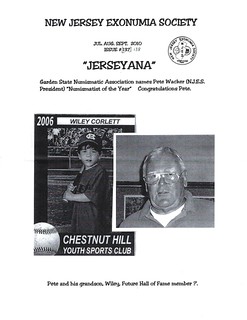 "Pete, a retired professor of geography at Rutgers, the State University of New Jersey, was president of the New Jersey Exonumia Society (which became the Northeast Token and Medal Society) from 2006 until it disbanded in 2012. He passed away on March 24 of last year. He lived in Martinsville, Bridgewater Township, Somerset County, N. J.
"Pete, a retired professor of geography at Rutgers, the State University of New Jersey, was president of the New Jersey Exonumia Society (which became the Northeast Token and Medal Society) from 2006 until it disbanded in 2012. He passed away on March 24 of last year. He lived in Martinsville, Bridgewater Township, Somerset County, N. J.
"His academic focus was historical geography – land use patterns developed over time by settlers and cultural groups – particularly those occurring in his native New Jersey, In addition to his research and writing in this field, Pete served the state in several capacities. He was a 40 year member of the New Jersey State Review Board for Historic Sites and was on the editorial boards of New Jersey History, published by the New Jersey Historical Society, and the Journal of Cultural Geography. In 2001 he received the New Jersey Historical Commission's highest honor, the Richard J. Hughes Award.
"Pete's keen interest in history prompted him to provide an extensive set of NJES's newsletter Jerseyana to the Rutgers University Special Collections, where it may be consulted by persons seeking information about local history relating to exonumia. A set is also available on the Newman Numismatic Portal."
Thank you. Here's an excerpt from Peter's obituary. -Editor
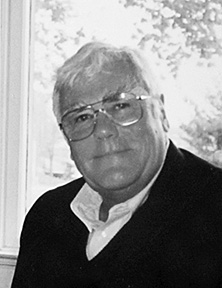 Rutgers University Professor Emeritus Peter O. Wacker of Martinsville passed away on March 24, 2020 at the age of 83. Services were private. Condolences can be posted on the website of the Bruce C. VanArsdale Funeral Home, Somerville
Rutgers University Professor Emeritus Peter O. Wacker of Martinsville passed away on March 24, 2020 at the age of 83. Services were private. Condolences can be posted on the website of the Bruce C. VanArsdale Funeral Home, Somerville
The son of immigrants, Peter grew up in Irvington, graduated from Montclair State College, and earned his PhD from Louisiana State University. Generous with his time for students and the public, Peter thought it was important for people to understand not only world geography but also their own local geography, history and culture.Peter possessed a boundless curiosity about the world, most of which he had visited. He loved travel, fishing, gardening, and a good joke.
The next part is from a Peter O. Wacker Memorial written by friend and colleague Maxine Lurie' -Editor
The dissertation he wrote Forest, Forge, and Farm
became The Musconetcong Valley of New Jersey: A Historical Geography (Rutgers University Press, 1968). His Land and People: A Cultural Geography of Preindustrial New Jersey: Origins and Settlement Patterns (Rutgers University Press, 1975) is still cited by scholars for the insights it provides on how settlers origins influenced the way land was used, what crops were planted, fences and barns constructed. Land Use in Early New Jersey, with Paul Clemens, (New Jersey Historical Society, 1995) used framers diaries, and early account books, to chart and map what was produced and where.
Wacker worked with historian Maxine N. Lurie and Rutgers cartographer Michael Siegel to edit Mapping New Jersey: An Evolving Landscape (Rutgers University Press, 2009). The book used historic maps and newly designed ones to explain the changing history of the state. In addition he contributed chapters in books, such as the Swedish Settlement in Southern New Jersey,
in Carol Hoffecker, ed. New Sweden (University of Delaware Press, 1995), as well as articles in New Jersey History and other journals. He also served on the editorial boards of New Jersey History, the Journal of Cultural Geography, and was a member of numerous academic organizations.
Wacker received a number of awards over the course of his career including a Guggenheim Fellowship, repeated research grants from the Rutgers Research Council and the New Jersey Historical Commission. He also was presented with the New Jersey Studies Academic Alliance's College Teacher of the Year Award (2000), and the New Jersey Historical Commission's Richard J. Hughes Award (2001) the highest one it gives.
To read the complete obituary, see:
Peter O. Wacker
(https://geography.rutgers.edu/people/in-memorium/details/835-peter-o-wacker)
To read JERSEYana on the Newman Portal, see:
JERSEYana
(https://nnp.wustl.edu/library/publisherdetail/514335)
CRISPUS ATTUCKS IN NUMMIS
Newman Numismatic Portal Project Coordinator Len Augsburger provided the following item on Crispus Attucks in numismatics. Thanks. -Editor
Crispus Attucks (c. 1723-1770), per Wikipedia, is widely regarded as the first person killed in the Boston Massacre and thus the first American killed in the American Revolution. Historians disagree on whether he was a free man or an escaped slave, but most agree that he was of Natick and African descent.
Within numismatics, Attucks was most notably depicted on the U.S. Mint 1998 Black Revolutionary War Patriots Commemorative Silver Dollar, with the portrait of Attucks engraved by John Mercanti. The Eric P. Newman papers reveal two other examples. Attucks was featured in the American Negro Commemorative Society Series in August 1969, manufactured by the Franklin Mint in a 39mm silver proof format. Attucks also shows up in the American Patriots Series, these pieces were issued by the Beam Distilling Company and attached to Beam bottles. This piece is 32mm, in bronze, with Attucks included in July 1970. Again, these were produced by the Franklin Mint, along with many other Bicentennial-themed issues.
Image: obverse of 1998 Black Revolutionary War Patriots Commemorative Silver Dollar featuring Crispus Attucks
Link to Newman file on the American Revolutionary Bicentennial Commission, detailing Franklin Mint Bicentennial issues:
https://nnp.wustl.edu/library/book/567391
To read the earlier E-Sylum article, see:
NEGRO COMMEMORATIVE SOCIETY MEDALS
(https://www.coinbooks.org/v24/esylum_v24n08a31.html)
VIDEO: HOUSTON YOUNG NUMISMATISTS
These are selections from the David Lisot Video Library that feature news and personalities from the world of coin collecting. David has been attending coin conventions since 1972 and began videotaping in 1985. The Newman Numismatic Portal now lists all David's videos on their website at:
https://nnp.wustl.edu/library/multimediadetail/522852
Here's one on Young Numismatists at the recent Houston Money Show. -Editor
Young Numismatists Find Bargains at Houston Money Show 2021.
VIDEO: 14:33.
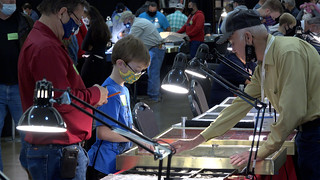 David Lisot, Interviewer, CoinTelevision.com, with Matthew Burek, James Chastun, Blake Gabriel, Trent Schwartz, Henry Sissmets, and Wade Spencer. January 23, 2021.
David Lisot, Interviewer, CoinTelevision.com, with Matthew Burek, James Chastun, Blake Gabriel, Trent Schwartz, Henry Sissmets, and Wade Spencer. January 23, 2021.
These are the youth that will keep coin collecting alive. David talks to young collectors and from ten years old to 26 years old about coin collecting, why they collect, the COVID Pandemic and more. Plus they show David their coin purchases.
An excerpt of the video is available for viewing on the Coin Television YouTube Channel at:
https://youtu.be/Pw3Sur9Hklk
Back in 2000 the Naples Bank Note Company (NBNC) intended to offer the European Central Bank the opportunity to have a US company print the Euro. In order to get samples to submit to the ECB, Naples Bank Note designed this One Million Euro Commemorative, complete with over 20 security features, including some never used before and only original to NBNC. These are the last sheets remaining. For collectors only.
MORE ON THE MANILA MINT
John Phipps writes:
"In the February 21, 2021 issue of The E-Sylum, Scott Barman writes: "... the U.S. Branch Mint in Manila, Philippines?" I included that phrase in my exhibit at the 2015 ANA World's Fair of Money Show in Rosemont. The "gentle correction" I got from ALL the judges felt like hitting my thumb with a hammer!! I was informed that "the 'Manila Mint of the Philippine Islands' was NEVER under the authority of the US Mint and was NEVER a 'Branch of the US Mint." I countered this "gentle correction" by pointing out that six of the publications in my bibliography called the Manila Mint a "branch of the US Mint." One of the judges pointed out to me that it wasn't a defense of my mistake to point out lots of others made the same mistake! Further, I was told that I should do my own research to discover the facts.
"Here is what I discovered after I took my exhibit home and did some research. During the period of US colonialism over the Philippines, all government functions in Manila were under the authority of the Bureau of Insular Affairs. At that time, the Bureau of Insular Affairs was first part of the Department of War and later part of the Department of the Interior. It was not part of the US Mint nor Department of the Treasury. The relationship that the US Mint had would be best typified as a highly trusted supplier-consultant to the f Mint.
"I agree with Mr. Barman that there is not a good source on the story behind the operation of the Manila Mint. There are a lot a fragments here and there. And with the very common myth about it being a "Branch," I wonder how many of these fragments are true or not. By the way, I still do exhibits but have learned to expect and enjoy the "gentle correction" of the judges."
Ken Berger writes:
"In response to Scott Barman's query in the last E-Sylum, Philippine Numismatic Monographs, No. 19, pp. 6-9, contains the following article: "The Mint of the Philippine Islands" by Gilbert S. Perez. This is a reprint from Numismatic Notes and Monographs, No. 8 of the American Numismatic Society."
Dave Lange writes:
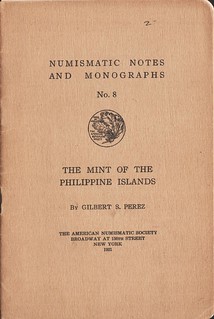 "Regarding Scott Barman's inquiry about books pertaining to the Manila Mint, most publications simply repeat the same old information that is not very detailed. The best source for facts about establishment of the mint is the ANS's Numismatic Notes and Monographs No. 8. This was written by Filipino numismatist Gilbert S. Perez and published in 1921, shortly after the events described unfolded. It doesn't have all of the information I've sought in my years of collecting the USA/Philippines coinage, but it's the starting point for any research into the subject of the Manila Mint.
"Regarding Scott Barman's inquiry about books pertaining to the Manila Mint, most publications simply repeat the same old information that is not very detailed. The best source for facts about establishment of the mint is the ANS's Numismatic Notes and Monographs No. 8. This was written by Filipino numismatist Gilbert S. Perez and published in 1921, shortly after the events described unfolded. It doesn't have all of the information I've sought in my years of collecting the USA/Philippines coinage, but it's the starting point for any research into the subject of the Manila Mint.
"This little booklet was very hard to find 30 years ago when I obtained my copy, but that was before the internet facilitated such searches. A scan of its cover is attached, but I don't know whether the content is still copyrighted after a century. I don't see it reproduced at the Newman Numismatic Portal.
"By the way, Scott is incorrect in describing this facility as a United States branch mint. To be such it would have been authorized by the U. S. Congress and placed under the U. S. Treasury Department, neither of which occurred. It was instead authorized by the Philippine Legislature in 1918 and was under the Bureau of Insular Affairs, a body created by Congress specifically to manage the Philippine Islands as a semi-autonomous entity. The Manila Mint contracted with the U. S. Mint for its machinery and dies, just as did several independent nations.
"I made the same incorrect assumptions about the nature of the Manila Mint in my early years of collecting and studying the USA/Philippine coins, and it's been difficult to retire them from numismatic mythology. At one time I was assembling research materials for what would have been the definitive book on these coins and their history, but this project lost steam after I sold the greater part of my collection 20 years ago."
"In the most recent E-Sylum you listed the two most recent examples of Allen's book for U.S. Philippines coins. There is also a more recent book: U.S.P.I Philippine Coinage Under American Sovereignty written by Eldrich Yap and Janssen Bantugan that is in my opinion a nice improvement over Allen's books. It is my understanding the authors are working on a second edition.
"The award-winning exhibit at the ANA Summer Show in Chicago I believe was put together by Floyd Aprill who lives near Milwaukee. He is a member of our Philippine Collectors Group."
Thanks for setting us straight, everyone! Actually, ANS NNM #8 is indeed on the Newman Portal, organized under the Periodicals category. See the link below. -Editor
Scott Barman writes:
"I knew I could count on the E-sylum readers to help my curiosity and research. Thank you."
To read Numismatic Notes and Monographs No. 8, see:
ANS Numismatic Notes and Monographs, Nos. 1-8
(https://nnp.wustl.edu/library/book/514233)
To read the earlier E-Sylum article, see:
NOTES FROM E-SYLUM READERS: FEBRUARY 21, 2021 : Books on the U.S. Branch Mint in Manila, Philippines
(https://www.coinbooks.org/v24/esylum_v24n08a17.html)
MORE NOTABLE NUMISMATIC THEFTS
Readers submitted information about some more interesting and notable numismatic thefts. -Editor
Bruce Bartelt writes:
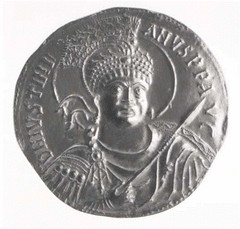 "Regarding greatest numismatic thefts, one of the greatest and saddest must be the 1831 theft from the Cabinet of Medals of the Bibliothèque Nationale de France. Apparently many valuable and some unique ancient gold coins and medals were removed and have been assumed to have been melted down. One piece was a 36-aureus of Justinian I (electrotypes survive, one in the British Museum). Besides coins, artifacts from a priceless Frankish treasure were taken.
"Regarding greatest numismatic thefts, one of the greatest and saddest must be the 1831 theft from the Cabinet of Medals of the Bibliothèque Nationale de France. Apparently many valuable and some unique ancient gold coins and medals were removed and have been assumed to have been melted down. One piece was a 36-aureus of Justinian I (electrotypes survive, one in the British Museum). Besides coins, artifacts from a priceless Frankish treasure were taken.
"In my reading I have seen several passing references to this theft and have always wondered if there is a full written account and inventory of the lost items. Do any of our readers know?"
For more information, see:
electrotype; medallion
(https://www.britishmuseum.org/collection/object/C_B-11501)
The great find and great loss of Childeric's treasure
(http://www.thehistoryblog.com/archives/37323)
Alan Luedeking writes:
"I was surprised not to see the famous theft of coins from the Joseph J. Mickley collection in 1867 on the list."
Right - that's a big one. -Editor
Alan V. Weinberg writes:
"In connection with recent E-Sylum references to Joe Levine, major numismatic thefts & Monticello, I am submitting rather mediocre images of photos Joe gave me in the early 1980s of Julian PR 2 silver Thomas Jefferson inaugural medal by engraver John Reich. This was stolen from Jefferson's Monticello in the early 1980s and has not resurfaced in all these subsequent decades. It has an obverse noticeable rim ding opposite 1801 and a peripheral small gouge on the rev above Wing. The medal is rare in any metal and this silver medal in this condition is worth north of $30,000 today. There are fewer than a dozen silvers known."
"The photos Joe gave me were not of the best quality, even cut off on the edges, and likely given to Joe by Monticello. Still there are defects which identify the medal. It is amazing it hasn't been seen in all these decades which means it has likely sat in a long time collection, perhaps one of your readers without them knowing of its stolen status.
"The medal is also listed in DeWitt/ Sullivan and so would be of interest to political collectors."
We could go on all day with smaller thefts, but Jefferson's personal inauguration medal is really something special. But any rare item with known identifying characteristics is worth being on the lookout for. Here's another missing rarity. -Editor
Alan adds:
"In 1998 this Sheldon-3 1793 Chain cent, likely slab graded EF 40 these days, was mailed raw on approval via Overnight Express Delivery insured / priced for $17,000 to an Oregon collector, in 1998. The collector, since deceased, claimed he received the package empty. It is still out there, not having surfaced so far as both Tony Terranova and I, both regular viewers of better Chain cents, are aware."
Alan also submitted these notes on other notable coin thefts. -Editor
Circa 1964 an armed robbery at Lester Merkin's NYC office wherein numerous rare coins were stolen, coins appearing soon after in other NYC coin shops.
Circa 1966 I discovered the switching of rare American coins for more common coins in trays at the British Museum. At the time the unsupervised exhibition of coins to off the street visitors invited into their vault rooms was the practice. I discovered this while being allowed to view tray upon tray of treasures over several days. One coin missing was an Uncirculated 1792 half disme donated by either Sir Joseph or Sophia Banks circa 1800. In its place was an EF cleaned 1829 half dime. At least the switched-in coin was the same denomination. As a result of this revelation, the BM instituted considerably more secure visitation viewing.
One of the DuPont armed robbery coins was a 1787 gold Brasher Doubloon (recovered years later) but still outstanding is a unique silver 1866 no motto seated dollar.
A red 1864-L Proof Indian cent, slabbed high grade, stolen out of Rick Snow's bourse case at a Baltimore show several years ago, later traced to Canada and still outstanding. A six figure coin.
A long term switching of large cents from the NYC ANS by William H Sheldon who resold the higher grade ANS large cents with his collection, with many coins ending up in innocent 3rd party hands. Most coins recovered and returned to ANS with some cents still outstanding. The Sheldon switching extended beyond the ANS into other private collections.
To read the earlier E-Sylum article, see:
GREAT NUMISMATIC THEFTS
(https://www.coinbooks.org/v24/esylum_v24n08a15.html)
MORE ON PAUL S. SZEGO
Readers submitted information about Paul S. Szego in response to Dave Hirt's query. Thanks! -Editor
John Byars writes:
"Assuming this is the right guy, maybe some of this will add to what the others will find.
- Paul Stadler Szego born 7-17-1899 in Hungary
- Wife Helen, daughter Clara, and son George – living in New York.
- 2-14-1927 Petition for Naturalization shows his occupation as Banknote Designer
- 1930 Census – New York - shows him as Banknote Designer
- 1940 Census – New York - shows him as Artist – Private Work
- 1942 Draft Card shows him working for Rand Mcnally Co. Inc in New York.
- Draft card has his New York address marked out, now showing Washington, DC
- Google Books shows that during the war he was working for the government in the Cartographic Branch."
Pete Smith writes:
"Attached are some facts about Paul S. Szago. He is mentioned in Gene Hessler's book, The Engraver's Line. "He was employed at the Hamilton BNCo and Central BNCo before 1930."
Here are Pete's notes, which confirm and add to John's. Pete included an image of Szago's tombstone. Thanks, everyone! -Editor
- Name: Paul Stadler Szego Ph.D
- Born: in Vespirm, Hungary on July 17, 1889
- Father: Carl
- Mother: Caroline
- Wife: Helen Elek; Mildred Eleanor Sherry Szego, married July 8, 1949, in Los Angeles
- Son: George
- Daughter: Clara Szego Roberts
- Education: Doctorate in history from Royal University in Budapest
- Immigrated: Ellis Island, May 21, 1921, sailed on S.S. New Rochelle out of Bremen
- Description (1921): 6ft, 133 lbs, brown hair, brown eyes Citizenship: 1927
- Died: December 24, 1960, in hospital in Alexandria, Virginia
- Auction: Sale number 1, June 19, 1937. Sale is available on Internet Archive.
- Auction: Numismatic Fine Arts, December 14, 1989
- Author: Collecting Greek Coins (1937)
- Employment: Army Map Service
- Address in 1937: 812 Broadway, NYC; He suffered a burglary of 60 ancient coins in 1937.
- Address in 1956: 900 N. Wayne Street, Arlington, Virginia
- Ad in The Numismatist: April 1956, page 508
- Past President: Washington (DC) Numismatic Society: vice president and curator in 1953
- Board Member: Middle Atlantic Numismatic Association, 1953
Dave Hirt writes:
"Thanks. WOW, Our readers are amazing!!"
To read the complete article, see:
QUERY: DEALER PAUL S. SZEGO
(https://www.coinbooks.org/v24/esylum_v24n08a18.html)
NOTES FROM E-SYLUM READERS: FEBRUARY 28, 2021
Book Review: Coinage and Currency in Eighteenth Century Britain
Darryl Atchison writes:
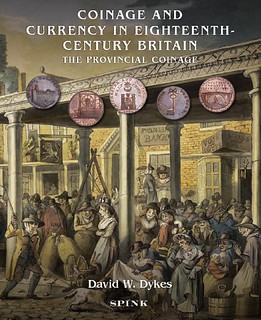 "Back in 2011, there were numerous articles in The E-Sylum referencing Sophia Banks who was a prominent and important collector from the late 18th century whose collections (at least in part) were posthumously donated to the British Museum. Subsequently, in E-Sylum Vol. 15, no. 9 (Feb. 26, 2012), there is a review of a magnificent book by David Dykes entitled, "Coinage and Currency in Eighteenth Century Britain" that was published by Spink in 2011.
"Back in 2011, there were numerous articles in The E-Sylum referencing Sophia Banks who was a prominent and important collector from the late 18th century whose collections (at least in part) were posthumously donated to the British Museum. Subsequently, in E-Sylum Vol. 15, no. 9 (Feb. 26, 2012), there is a review of a magnificent book by David Dykes entitled, "Coinage and Currency in Eighteenth Century Britain" that was published by Spink in 2011.
It isn't mentioned in the short review there but this book is dedicated to Ms. Banks and, more importantly, the text contains quite a bit of biographical information about her as well as an overview of the developing interest in collecting these coins in general. Bibliophiles will find the chapter that traces the evolution of the various contemporary catalogues of these pieces to be both enjoyable and enlightening and they may even see similarities with later collecting patterns in North America from the late 19th century. I point this out merely so that bibliophiles won't overlook this important text in the belief that it is a collector's guide to the series which it most definitely is not!"
Thanks! -Editor
To read the earlier E-Sylum article, see:
NEW BOOK: COINAGE AND CURRENCY IN EIGHTEENTH CENTURY BRITAIN
(https://www.coinbooks.org/esylum_v15n09a03.html)
More on James C. Ruehrmund
Dave Schenkman writes:
"I was really saddened to read of Jim's death, although I knew his health wasn't good. Rather than write about him, I think my dedication to him in the second edition of Virginia Tokens, which was published in 2015, conveys my feelings about him:
"This book is dedicated to James C. Ruehrmund who, while a naval officer living in Norfolk, allowed this young and very inquisitive collector to spend numerous hours studying the vast and diverse array of numismatic items in his coin cabinet. The time he took to patiently answer what he must have thought to be a never-ending barrage of questions made me aware that there was much more to the hobby than just U.S. coins. Those visits were, in large part, the foundation for my lifelong interest in numismatics. Thanks, Jim."
Sounds like my kind of guy! -Editor
"His obit is in Saturday Richmond Times-Dispatch. He was 94."
To read the Richmond Times-Dispatch obituary see:
James C. RUEHRMUND Sr.
1926 - 2021
(https://www.legacy.com/us/obituaries/timesdispatch/
name/james-ruehrmund-obituary?pid=197813803)
To read the earlier E-Sylum article, see:
JAMES C. RUEHRMUND (1926-2021)
(https://www.coinbooks.org/v24/esylum_v24n08a10.html)
Query: C. & P. MELLUS / DETROIT Counterstamp
Ernie Nagy writes:
"I am researching the C. & P. MELLUS / DETROIT counterstamped Large Cent pictured below for a TAMS Journal article. I would like to know if any E-Sylum readers are aware of the existence of another example. My coin has been counterstamped on an 1850 Large cent, as has the coin listed in Dr. Brunk's catalog. C & P Mellus were saw manufacturers, so possibly this is a one-off made from a die used to mark their tools. The catalog does not note the slashes which decorate
the obverse and reverse borders. Any information or insight would be appreciated."
ex Bob Merchant, ex. Q. David Bowers collection.
ex. Roy Van Ormer collection, 4/8/1985.
Purchased at the Baltimore Coin Show, 11/10/2006.
I don't believe I've ever seen one of these. Can anyone help? Thanks. -Editor
Another Joe Levine Inscription
Scott Miller writes:
"One more note on Joe Levine. Joe was very pleased with his TAMS presidential medal, and mentioned it to me on a number of occasions. When I received my presidential medal from the New York Numismatic Club, Joe insisted we exchange medals. However, when I told him that mine was much better, he wouldn't hear of it, claiming his own was a work of art. A few months later when I was in the DC area, I asked Joe to write something on the box of his medal, which can be seen here."
To read the earlier E-Sylum article, see:
NOTES FROM E-SYLUM READERS: FEBRUARY 21, 2021 : More on Joe Levine
(https://www.coinbooks.org/v24/esylum_v24n08a17.html)
David Fanning writes:
"Here's another Joe Levine inscription, this on a copy of his November 1997 auction sent to John Ford."
Thanks! These are great. The first part reads, "To John Ford - Who has the chutzpah to ask for 2 more copies of this valuable sale when he has not given me a consignment worth spit in the last two years!" You're on your own to read the last part. Great and unique sense of humor. -Editor
To read the earlier E-Sylum article, see:
NOTES FROM E-SYLUM READERS: FEBRUARY 21, 2021 : More on Joe Levine
(https://www.coinbooks.org/v24/esylum_v24n08a17.html)
Number Ninety-Six
Ken Berger writes:
"In the last E-Sylum, the town of Ninety Six (the article spells it as Ninety-Six), S.C., is mentioned in the Liberian Exodus article. Another interesting fact about the town is the following:
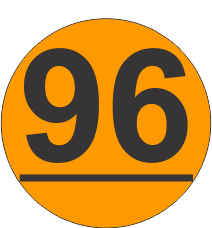 "William S. Voiselle (1/29/19 – 1/31/05) was a starting pitcher in Major League Baseball. He played for the New York Giants (1942–47), Boston Braves (1947–49) and Chicago Cubs (1950). Although he was born in Greenwood, S.C., he grew up in the nearby town of Ninety Six. He received special permission from the National League to wear the number 96 on his jersey as a way to honor his hometown. At the time, this was the highest number ever worn in major league baseball. He is also the only player to wear the name of his "hometown" on his jersey."
"William S. Voiselle (1/29/19 – 1/31/05) was a starting pitcher in Major League Baseball. He played for the New York Giants (1942–47), Boston Braves (1947–49) and Chicago Cubs (1950). Although he was born in Greenwood, S.C., he grew up in the nearby town of Ninety Six. He received special permission from the National League to wear the number 96 on his jersey as a way to honor his hometown. At the time, this was the highest number ever worn in major league baseball. He is also the only player to wear the name of his "hometown" on his jersey."
Interesting. Near my hometown of Pittsburgh is the town of Eighty Four, PA. The origin of the name is uncertain. The origin of Tenino (based on the number ten-nine-oh (1090) - perhaps a railroad station number - is similarly uncertain. But Tenino can't be the only number-named town with a numismatic connection. Can anyone supply us with images of tokens, medals or paper money from Eighty Four, Ninety Six or other number-named towns? -Editor
To read the earlier E-Sylum article, see:
THE LIBERIAN EXODUS
(https://www.coinbooks.org/v24/esylum_v24n08a30.html)
March of Dimes Lapel Pin
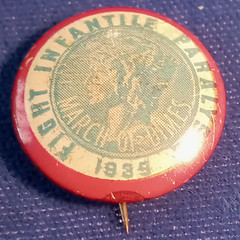 Dave Lange writes:
Dave Lange writes:
"Harry Waterson's contribution about the March of Dimes reminded me of a lapel pin in my collection that features the image of a Mercury Dime for the 1939 MOD campaign. I acquired this almost 30 years ago simply to photograph it for my book on Mercury Dimes. My new, color photo is attached."
Cool item! Thanks. -Editor
To read the earlier E-Sylum article, see:
NOTES FROM E-SYLUM READERS: FEBRUARY 21, 2021 : FDR March of Dimes Facts
(https://www.coinbooks.org/v24/esylum_v24n08a17.html)
THE BOOK BAZARRE
A NOT SO VALUABLE NUMISMATIC THEFT
Inspired by our discussion of noteworthy thefts of numismatic items, John Regitko of Toronto, Canada writes:
"Some years ago when the Central Coin Club (Toronto) was in existence, I lost a few coins to thieves. I am attaching a write-up that was published in Canadian Coin News. It might not have been of great value, but they were "valuable" to me!"
Thanks - here's the story! -Editor
YMCA BREAK-IN YIELDS SILVER DOLLAR COLLECTION
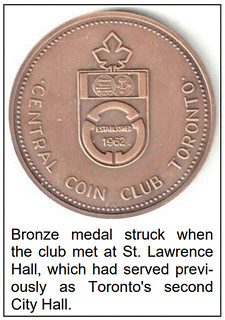 The Central Coin Club was founded in 1962, meeting weekly at
the Central YMCA in downtown Toronto (as program director, I
planned weekly programs, and you monthly planners think you
have it difficult!).
The Central Coin Club was founded in 1962, meeting weekly at
the Central YMCA in downtown Toronto (as program director, I
planned weekly programs, and you monthly planners think you
have it difficult!).
As the club's liaison to the YMCA, I was asked to set up a display on coin collecting for a two-day showing of all the activities that take place at the "Y."
I set up a two-case display of a set of Canadian silver dollars. The exhibits were not manned, so meeting details were incorporated into the display.
While the displays were in the lobby, security was always present. Displays of some value, including my two cases, were locked up Saturday evening in the office on the second floor and brought out again on Sunday morning.
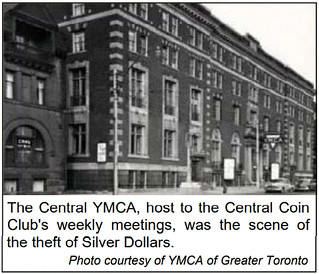 When the office was unlocked on Sunday morning, the display cases had been pried open and the
contents removed. The police were called, who
determined that someone managed to get to the
ledge on the second floor, climbed into the office
by breaking the lock on the window, ripping out the
hinges of the display cases and removing the
coins. It was assumed they made their getaway
the same way since the office door was still locked.
When the office was unlocked on Sunday morning, the display cases had been pried open and the
contents removed. The police were called, who
determined that someone managed to get to the
ledge on the second floor, climbed into the office
by breaking the lock on the window, ripping out the
hinges of the display cases and removing the
coins. It was assumed they made their getaway
the same way since the office door was still locked.
No cameras were present to capture the comings and goings in the building or individual offices in the 1960s. The Toronto Police CSI team dusted the window, lock and the display cases for fingerprints. They asked for my fingerprints so as to eliminate them as a suspect.
As luck...or stupidity...would have it, a teenager bought some pop and candy at a local variety store a few blocks away, paying with silver dollars. The clerk thought it was unusual for a young kid to spend silver dollars and called the police who put two and two together.
The police apprehended the teenager. The coins the clerk turned over to them, as well as a quantity of the others which the teenager still had on him, were returned to the YMCA who, in turn, gave them to me.
I never found out the outcome of the charges against the young offender. However, since I was never called to testify, I assume the thief enjoyed the candy and pop he had purchased before being apprehended without penalty or restitution.
After submitting a statement of claim to the YMCA's insurance company, I received a cheque which, to my best recollection, amounted to something just over $500, due to the condition of the coins and the fact insurance covered their full retail value. Since this took place around 1965, that would be over $3,700 in today's purchasing power.
Cale B. Jarvis, the resident editor of Canada Coin News (which was founded by Chet Krause, publisher of Numismatic News of Iola, Wisconsin in 1963), did consulting work. He evaluated claims for insurance companies in cases of theft, fire, arson, flood, etc., of property and collectibles, including coins. He received my inventory of loss and my claim for replacement value from the insurance company and agreed with my evaluation. I found this out years later when he no longer represented insurance companies' interests. He stumbled upon his file copy years later and gave it to me.
No 1948 silver dollar was returned, for a very good reason. The exhibit was directed towards members of the YMCA, not the numismatic community. Although reverses with the dates were shown for the most part. I also showed the obverses of George V, George VI and QE-II. Creativity of the layout enabled me to show the obverse of the 1948 dollar...except it was another year of George VI.
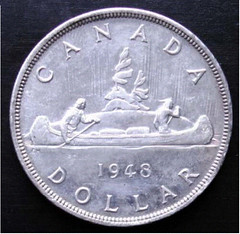 The 1948 silver dollar I owned I bought for $15 from
someone that I met during my high school days when I
worked as a cashier at a variety store. He owned seven
of them. Fortunately for him, it is a Jewish custom to
obtain coins with the year a son is born and hand them
out to relatives and close friends. The seven leftovers,
dated 1948, were given to the birthday boy by his father.
The 1948 silver dollar I owned I bought for $15 from
someone that I met during my high school days when I
worked as a cashier at a variety store. He owned seven
of them. Fortunately for him, it is a Jewish custom to
obtain coins with the year a son is born and hand them
out to relatives and close friends. The seven leftovers,
dated 1948, were given to the birthday boy by his father.
I sold it one year later for the going price of $150. If I had included it in the display and did not replace it because I had moved on to errors and primitive forms of money, I would probably have claimed $50 from the insurance company for its then retail value and would have lost out on a $100 profit.
Mind you, if I had held onto it, today I could get thousands for it!
To read the earlier E-Sylum article, see:
GREAT NUMISMATIC THEFTS
(https://www.coinbooks.org/v24/esylum_v24n08a15.html)
2021 CENTRAL STATES SHOW CANCELLED
COVID-19 coin show cancellations continue apace. While smaller shows can sometimes make it work, large shows can't find a viable path through local regulations in most areas. Big events were the first to shut down, and will be the last to return. Here's the press release about the cancellation of the 2021 Central States show. -Editor
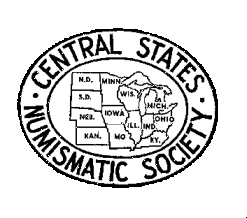 The Central States Numismatic Society Board of Governors has voted to cancel the 2021 convention, scheduled to take place April 21-24, due to ongoing concern for the health of the society's members and booth holders, and roadblocks in Illinois state regulations.
The Central States Numismatic Society Board of Governors has voted to cancel the 2021 convention, scheduled to take place April 21-24, due to ongoing concern for the health of the society's members and booth holders, and roadblocks in Illinois state regulations.
From the moment of the cancellation of our 2020 event, the CSNS Board and our management prioritized what was going to be necessary to ensure the health and safety of our attendees as well as the viability of the event as we prepared for our 2021 convention,
said Central States President Mitch Ernst.
While infection rates are dropping from winter highs, and vaccination rates are increasing, we do not have sufficient assurance that traveling and attending a large event can be done yet with adequate safety, or even allowed. We are as disappointed as anyone because we know what our convention means to the numismatic community,
Ernst added.
Convention Manager Larry Shepherd said, We really had no choice. Illinois has limited gatherings to no more than 50 people for months, regardless the size of the space. It's not a matter of protocols or spreading out. They have set a limit per event that's fixed, whether we use 1,000 sq. ft. or 100,000.
"We were really hopeful through January, but after initial signals the state would adjust guidelines upward by mid-February, the state kicked the can down the road until March. It's not fair for us to keep our members and dealers waiting until a month before the convention to get a clear answer. Wishing and hoping and all the preparation in the world can't overcome a state roadblock."
Dealers who rolled a table over from last year, or who purchased a new table for 2021, will be contacted shortly with options for rollover or refund. Attendees who have already booked rooms with the host hotel should contact them directly at 1-847-303-4100.
The 2022 convention will be held April 27-30 at the Renaissance Hotel and Convention Center in Schaumburg, Ill. Shepherd said preliminary plans call for the show to expand next year to include special events for PNG dealers and PCDA members.
To read the complete article, see:
CSNS Board Votes to Cancel 2021 Convention
(https://www.centralstatesnumismaticsociety.org/post/csns-board-votes-to-cancel-2021-convention)
For more information on the Central States Numismatic Society, see:
https://www.centralstatesnumismaticsociety.org/
2022 NYINC NUMISMATIC MEDIA PANEL DISCUSSION
A great panel session has been scheduled for the next New York International. Here's the press release. -Editor
Numismatic Media Panel Discussion
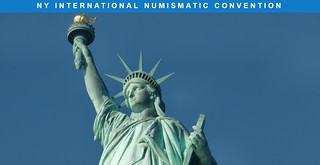 The 50th Annual New York International Numismatic Convention, to be held at the Grand Hyatt New York, located at 109 East 42nd Street, between Park and Lexington Avenues, will feature a numismatic media panel discussion, Challenges and Opportunities Facing the Numismatic Media in an Evolving Social and Technological Environment. Scheduled from 1PM-3PM on Friday, January 14 in the Julliard Room of the Grand Hyatt, the panel will consist of Dr. Andrew Reinhard, the American Numismatic Society's Director of Publications; David Lisot, CEO of
cointelevision.com; Jeff Starck, Coin World's World Coins Senior Editor; Dr. Ursula Kampmann, Director of
coinsweekly.com and Charles Morgan, Editor of
coinweek.com.
The 50th Annual New York International Numismatic Convention, to be held at the Grand Hyatt New York, located at 109 East 42nd Street, between Park and Lexington Avenues, will feature a numismatic media panel discussion, Challenges and Opportunities Facing the Numismatic Media in an Evolving Social and Technological Environment. Scheduled from 1PM-3PM on Friday, January 14 in the Julliard Room of the Grand Hyatt, the panel will consist of Dr. Andrew Reinhard, the American Numismatic Society's Director of Publications; David Lisot, CEO of
cointelevision.com; Jeff Starck, Coin World's World Coins Senior Editor; Dr. Ursula Kampmann, Director of
coinsweekly.com and Charles Morgan, Editor of
coinweek.com.
Kevin Foley, Bourse Chairman of the foreign and ancient specialty convention, said, This will be our 50th annual convention. I am especially pleased that we'll be able to have a panel discussion focused on the numismatic media featuring such a distinguished and qualified group of media professionals. Indeed, we'll likely be adding additional participants before the dates of our convention. Our format will be a short presentation of roughly 10 minutes by each panel member, followed by interactions between the panel participants and with our audience members. The very makeup of what we consider to be the
media
or press
is changing and evolving and has been at accelerating pace for a decade of more. Especially because of the experience and qualifications of our panel members I think this will be an exciting presentation of particular importance.
NYINC activities at the Grand Hyatt will get underway on Friday, January 7 with the opening of auction lot viewing. Multiple foreign and ancient specialty auctions will be held each day from January 9-16. The NYINC specialty bourse will be held Thursday-Sunday, January 13-16.
Room rates at the Grand Hyatt begin at a discounted NYINC rate of $189. A link to book online can be found on the NYINC website, www.nyinc.info. Foreign and ancient dealers interested in having a booth at the event should contact Foley at (414) 807-0116 or via e-mail at kevinsfoley.kf@gmail.com.
SUBSCRIBER PROFILE: HOWARD A. DANIEL III
This profile of Howard Daniel is excerpted with permission from the December 2020 issue of The Chopmark News. Thanks.-Editor
I was in the US Army and stationed on Okinawa in 1964, when I met a man by the name of John A. Novak. He was recruiting collectors of US coins, paper money, tokens, etc., to switch over to East Asia. He believed it was a challenging area to collect, research and write about, and most Americans did not know much about the region and numismatists could help teach them about it.
After several months of listening to him at the coin club meetings, I finally agreed to take on the cash-style coins of Viet Nam. He showed me some references in his personal library which included Viet Nam, but they were mostly in foreign languages. This was going to be more difficult than I thought it would be.
I was receiving Coin World newspaper and started writing to the few world coin dealers advertising in it about what Vietnamese cash-style coins they had for sale. Not a single one
had any for sale! Then I looked in the classified ads and wrote to those selling world coins
and asked them the same question. Most did not answer but one wrote back to me, you collect what?
Then, I wrote to the librarians of the American Numismatic Association and the American Numismatic Society and asked them what references they had for Vietnamese cash-style coins. Their replies were almost exactly the same. Each of them had Albert Schroeder's Annam Étude Numismatique in two volumes and a couple of other booklets with just a few coins in each one.
This was going to be more than just challenging, it was going to be extremely difficult! At about that time, I received orders to report to Fort Benning, Georgia for Infantry Officer's Candidate School. I packed everything I owned in a large custom-made foot locker and shipped it to my parent's house in Fort Lauderdale, Florida.
I was injured at school with a badly separated shoulder, and in the hospital for almost a month and then two months of rehabilitation visits. The Army tried to give me a medical discharge but I refused it and they transferred me to Stuttgart, Germany. I found some German numismatic magazines there and I wrote to the European dealers advertising in them.
Some of them actually did have some Vietnamese cash-style coins for sale and several of them recommended other dealers. Some of the French dealers recommended that I start collecting French CochinChina and IndoChina coins, which the Vietnamese used when they were a colony and protectorate of France. I found many dealers had them for sale and started buying them.
I saw an 1899-dated 1 Piastre with chopped
in its description and decided to see what that
meant. After it arrived, I saw the strange three lines on the obverse and a deep impression
on the reverse with a dot in it. What did they mean? I showed them to a couple of collectors
of US coins in our local coin club and they told me the marks just lowered that value of the
coin and not to buy them.
As I accumulated a few coins (some chopped and paper money too), I put them between thin cardboard and in an envelope and registered mailed them to my mother. I told her that anything that arrived for her from me which was registered was not for her and to put them in my footlocker. Any mail that was not registered was for her or someone else in the family.
In late 1965, I received orders for Viet Nam! I was going to be in a combat unit in the Central Highland and on long range reconnaissance patrols! When I got to Oakland Army Terminal in California to await my flight, I was told it would take a week before I would fly but my orders got changed and I was to report to a one-star general in Saigon who was the head of intelligence!
My work was very, very challenging and I stayed in Viet Nam for four and one-half years! The work was from the lowest to the highest possible classification and accesses and I worked long hours and traveled around the region. Much of my travel outside of Viet Nam was to Bangkok to work in a sub-unit I created there as a backup site in case the primary site in Saigon got blown up.
While in Bangkok, I found a coin and stamp dealer with Vietnamese cash-style coins, along with some interesting pieces from Laos, Cambodia, Burma, Thailand, etc. I decided to expand my collecting to include more of Southeast Asia and I often found chopped coins from those countries too. In Saigon the locals were selling mostly fake coins to the military so I bought only a few coins there.
Then I traveled to Singapore a couple of times. Now there were many, many more Vietnamese cash-style coins at the few dealers back in the later 1960s. The most popular cash-style coins were Chinese and the dealers did not charge much for Vietnamese. This was my collecting heaven! I sent many registered envelopes from the US Embassy APO (mail) in Singapore back to my mother!
I departed Viet Nam in mid-1970 and was home on leave, when I saw my footlocker was almost full, so I bought a large trunk to store more of my registered mail. I was transferred to Heidelberg, Germany and often visited dealers in the neighboring countries and accumulated more and more coins and paper money to send by registered mail to my mother.
Duty in Europe was too boring for me, so I arranged to be transferred back to Viet Nam in late-1971 and was on a team to stand down the military there as the US part of the war came to an end. I had a little more time in Saigon to do some numismatic shopping, but I was constantly offered counterfeit coins. Nor I did find much more paper money to add to my collection.
After the war, I was stationed in the USA and got married. I had my large footlocker and a trunk sent to me. It was like Christmas, going through all of the packages and envelopes I had been sending home for ten years. My wife learned I wanted to write catalogs and she bought me an IBM Selectric Typewriter. My first catalog, French Colonial (Southeast Asia) was published in 1975.
There are some chopped coins in my latest Cambodia Coins & Currency>, Lao Coins & Currency, and French Southeast Asia Coins & Currency catalogs, and there will be many more in future publications.
For information on the Chopmark Collectors Club, contact chopmarknews@gmail.com. -Editor
VOCABULARY TERM: CORONATION MEDAL
Here's another entry from Dick Johnson's Encyclopedia of Coin and Medal Terminology. -Editor
Coronation Medal. A medallic item issued on the occasion of a coronation, the ceremony investing a sovereign with a royal crown. While the naming of a new king customarily takes place at a time of crisis, the coronation ceremony was one of celebration. It often allowed ample time for a medal to be prepared along with the ceremonies. While sovereignties existed from medieval times, and ceremonies were held for most every king, it wasn't until 1546 in England that the first coronation medal was issued for the ceremony of Edward VI, crowned 21 February that year (the medal, cast and chased, was by an unknown artist).
The custom spread to other monarchies; notably Austria (1619), France (1654), and the German States. In Spanish countries the equivalent of the coronation medal was the proclamation medal, and much later, in democracies, the inaugural medal. In more recent times coronation medals have been issued in The Netherlands, Norway, Japan and Iraq.
For each of these new rulers, however, the medal must have been issued at the time of the event; it could not be issued later, as a historical medal perhaps mentioning the date of the coronation. The unstated purpose of these medals, obvious and dramatically suitable for medallic art, was to document the event for posterity.
PIERRE EUGèNE DU SIMITIèRE (1737-1784)
Here's another entry from the online draft of John Lupia's book of numismatic biographies. Thanks! This is an excerpt with the full article and bibliography available online. This week's subject is American numismatic pioneer Eugène Du Simitière. I added the image of Joel Orosz's book, picturing Du Simitière on the cover. -Editor
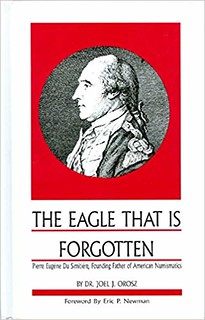 Pierre Eugène Du Simitière (1737-1784), Swiss engraver working in Philadelphia. He is among the early numismatists of the 18th century in America and a contemporary of Rev. Johann Christoph Kunze (q.v.). He was a typical gentleman of his time when educated men were absorbed with a keen interest and fascination with the physical and historical world and of human endeavors throughout historical times preceding their own. As a typical educated gentleman of the 18th century he was a collector of many things that fall within the three domains or categories of collectibles : Natural History, Antiques and Antiquities and the Curious and Curiosities.
Pierre Eugène Du Simitière (1737-1784), Swiss engraver working in Philadelphia. He is among the early numismatists of the 18th century in America and a contemporary of Rev. Johann Christoph Kunze (q.v.). He was a typical gentleman of his time when educated men were absorbed with a keen interest and fascination with the physical and historical world and of human endeavors throughout historical times preceding their own. As a typical educated gentleman of the 18th century he was a collector of many things that fall within the three domains or categories of collectibles : Natural History, Antiques and Antiquities and the Curious and Curiosities.
From 1764 to 1765 he was in Charleston, North Carolina and may have been involved in preliminary steps that later evolved into the first American Museum established in 1773. Regardless, nine years later we find in 1782, he opened his American Museum of Natural History. In 1785, a coin auction of the collection formed by Pierre Eugène Du Simitière was sold posthumously on March 10th.
Notices about Du Simitière's coin collection were cited in magazine articles in 1868 and again in 1874 and 1879. Publications about Du Simitière's Museum were published in the 1880's culminating with William John Potts, "Du Simitière, Artist, Antiquary, and Naturalist, Projector of the First American Museum, With Some Extracts from His Notebook," Pennsylvania Magazine of History and Biography, Volume 13, October (1889).
Notices about this auction broadside were published in recent years in 1900 by Robert F. Roden, who dated the sale on March 10, 1784; in 1937, by George Leslie McKay for The New York Public Library in the Union List; the sequel to that work was by Harold Lancour in 1944 who cites this as his first entry; Hans Huth's study that followed in 1945. In 1960, Paul Ginsberg Sifton, published his Ph.D. dissertation, Pierre Eugène Du Simitière (1737-1784): Collector in Revolutionary America. This was followed by Edwin Wolf 2nd, Marie Elena Korey, eds., Quarter of a Millennium: The Library Company of Philadelphia, 1731-1981 (Philadelphia: The Library Company of Philadelphia,1981). Wolf and Korey wrote extensively about the first American coin auction sale and published a breathtakingly handsome full photograph of the 1785 auction broadside on page 44 of their very impressive and gorgeously illustrated huge thick tome. This was the best early description of the Du Simitière coin auction published by 1981. Their article on Du Simitière ran from pages 43-46, illustrating him as a magpie collector.
In 1985, John C. Van Horne, wrote and published the Exhibition Catalog celebrating the Bi-Centennial of Du Simitière's Museum in a catalog titled : Pierre Eugène Du Simitière : His American Museum 200 Years After. An Exhibition At the Library Company in Philadelphia. July to October 1985. Horne also published the full photograph of the 1785 auction broadside.
Due to this exhibition Joel J. Orosz learned about Du Simitière and his coin collection and posthumous auction and then immediatelywrote an article, "Pierre Eugène Du Simitière: Museum Pioneer in America," Museum Studies Journal, (1985) : 11-14, which does not mention the coin auction. Three years later in 1988, Du Simitière was given an in-depth prosopographical study by Joel J. Orosz in his work, The Eagle that is Forgotten, where he wrote about the coin auction for the first time. That was seven years years after Wolf & Korey published the photographic reproduction of the Du Simitière auction catalogue of 1785 and wrote about that in their landmark book. Joel J. Orosz, repeats most of what they had had already published as well as that by Van Horne three years earlier making The Eagle that is Forgotten, a handy reference work that concisely collates all useful material and information on Du Simitière in one volume.
To read the complete article, see:
DU SIMITIÈRE, PIERRE EUGÈNE
(http://www.numismaticmall.com/numismaticmall-com/du-simitiere-pierre-eugene)
To read an earlier E-Sylum article, see:
BOOK REVIEW: THE EAGLE THAT WAS FORGOTTEN
(https://www.coinbooks.org/v22/esylum_v22n18a08.html)
HARVEY STACK'S NUMISMATIC FAMILY, PART 90
The latest article in Harvey Stack's blog series discusses the 1983 sale of the Dr. Jerome S. Coles collection. Thanks. Great collection! -Editor
As we came to the last few months of 1983, Stack's continued to present important public auction sales. Our October sale featured the collection of Dr. Jerome S. Coles, (known as Jerry to his close friends and the Stack family). Jerry was a noted surgeon, who left his practice in 1946 to join the Philip H . Hunt Chemical Co. By 1950 he was the CEO of the corporation, one of the largest photographic chemical manufacturers, serving processing companies worldwide. Later Dr. Coles was Chairman of the Board of New York University Medical Center in New York, for decades.
Dr. Coles started collecting U.S. gold coins in the early 1960s, guided by the gold section of Norman Stack's book Type Coins of the United States. As he progressed with his collection, he became enamored with the early gold coins issued from 1795 to 1834, and acquired many from us, both over the counter and in our auction sales. As catalogs that also featured territorial gold crossed his desk, he became interested in that specialty. He high quality collection of one of each issue made by private firms was nearly complete. Jerry attended most of the important auction sales we conducted, and bid enthusiastically to acquire the coins he desired.
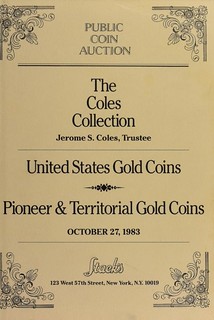 Among U.S. gold coins, there was nearly a full set of gold dollars. For quarter eagles it included both varieties of 1796, 1797, 1798, 1806/5, 1808, and 1848 CAL. Three dollar gold pieces were highlighted by an 1854-D and an 1879 Flowing Hair Stella was also included. An extraordinary group of half eagles included 1795, 1796, 1797, 1798, and 1813. Eagles included pieces from 1795 through 1804 while double eagles contained a basic type collection that featured the 1861-S Paquet reverse.
Among U.S. gold coins, there was nearly a full set of gold dollars. For quarter eagles it included both varieties of 1796, 1797, 1798, 1806/5, 1808, and 1848 CAL. Three dollar gold pieces were highlighted by an 1854-D and an 1879 Flowing Hair Stella was also included. An extraordinary group of half eagles included 1795, 1796, 1797, 1798, and 1813. Eagles included pieces from 1795 through 1804 while double eagles contained a basic type collection that featured the 1861-S Paquet reverse.
The unforgettable highlight of the Coles Collection was the remarkable, virtually complete offering of pioneer and territorial gold coins. It began with 21 different Bechtler coins and continued on to include 10 different California gold "slugs" plus many lower denomination coins of the U.S. Assay Office and Augustus Humbert. Also featured from California were Baldwin, Kellogg & Co., Miners Bank, Moffat & Co. Norris, Gregg & Norris, and Pacific Co. Mormon coins from Utah were included along with Oregon pieces, Parson & Co., and from Colorado coins made by Parson & Co., Clark, Gruber and Conway & Co.
The Coles Collection offering of territorial gold was a history making event. Although a number of important cabinets featuring this specialty had been offered during the 1960s and later, none were as complete as this incredible offering, and it remains one of the most extensive and representative such offerings of all time.
To close out 1983, Stack's was thrilled to be offering another such history making event, this time featuring colonial and early American coins. Next time I will discuss our landmark offering of the John L. Roper Collection that took place in December of that year.
To read the complete article, see:
Harvey Stack Remembers: Growing up in a Numismatic Family, Part 90
(https://www.stacksbowers.com/News/Pages/Blogs.aspx?ArticleID=harvey-stack-remembers-part-90)
To read the earlier E-Sylum article, see:
HARVEY STACK'S NUMISMATIC FAMILY, PART 89
(https://www.coinbooks.org/v24/esylum_v24n07a19.html)
STACK'S BOWERS OPENS PHILADELPHIA GALLERY
Stack's Bowers Galleries is opening a new location in Philadelphia. Here's the press release. -Editor
Stack's Bowers Galleries Announces New Philadelphia Gallery at 1735 Market Street
 Stack's Bowers Galleries is proud to announce plans for a new rare coin gallery in historic Philadelphia, Pennsylvania. Located at 1735 Market Street on the corner of 18th Street and John F. Kennedy Boulevard, the new gallery is situated in the heart of Center City, in the midst of the area's best dining, shopping, and entertainment. It is just blocks away from such iconic landmarks as the Comcast Center, Reading Terminal, and beautiful Philadelphia City Hall. It is also a 15-minute walk to the 30th Street Amtrak station, granting convenient access to collectors across the entire Northeast. Renovations are currently under way and the firm hopes to open the 1735 Market Street storefront to collectors in late summer 2021. With the opening of this new gallery, Stack's Bowers Galleries is thrilled to unite America's greatest numismatic city with the country's most accomplished rare coin firm.
Stack's Bowers Galleries is proud to announce plans for a new rare coin gallery in historic Philadelphia, Pennsylvania. Located at 1735 Market Street on the corner of 18th Street and John F. Kennedy Boulevard, the new gallery is situated in the heart of Center City, in the midst of the area's best dining, shopping, and entertainment. It is just blocks away from such iconic landmarks as the Comcast Center, Reading Terminal, and beautiful Philadelphia City Hall. It is also a 15-minute walk to the 30th Street Amtrak station, granting convenient access to collectors across the entire Northeast. Renovations are currently under way and the firm hopes to open the 1735 Market Street storefront to collectors in late summer 2021. With the opening of this new gallery, Stack's Bowers Galleries is thrilled to unite America's greatest numismatic city with the country's most accomplished rare coin firm.
This Philadelphia location will offer the firm's entire range of numismatic services. Collectors will be able to sell their coins and paper money for top market value and browse an extensive selection of items available for direct purchase. The gallery will also serve as an important resource for gold and silver bullion trading, appraisals, and auction expertise.
The Philadelphia gallery will be led by Head Numismatic Trader Robert Avena, one of the industry's most respected experts. Mr. Avena has been active in the rare coin industry for many decades, having started his own coin firm in the early 1980s before joining Stack's Bowers Galleries in 2000. During that time, he has attended every major convention and auction and has handled the most valuable rarities in United States coinage. Mr. Avena is a proud member of the Professional Numismatists Guild (PNG) and is a life member of the American Numismatic Association (ANA), the Silver Dollar Round Table, and the Florida United Numismatics (FUN). The firm is eager to grow their team at the new gallery and is seeking to hire experienced numismatic specialists, along with shipping and administrative staff. Interested candidates are invited to send resumes and cover letters to Careers@stacksbowers.com.
We are very excited to enter the Philadelphia market, particularly in such a great location in the heart of Center City,
said Stack's Bowers Galleries President Brian Kendrella. This city and its collectors have been crucial to the history and success of our business, and we are proud to have a new home in Philadelphia.
For over 85 years, Stack's Bowers Galleries has served as the hobby's premier resource for collectors. Established in 1933 by brothers Joseph and Morton Stack, Stack's Rare Coins quickly grew to become the nation's leading numismatic firm. Stack's Rare Coins held their first auction sale in 1935 and served as an official distributor of United States Mint commemoratives in 1936. Their first auction at the American Numismatic Association's annual summer convention took place in 1939, an honor that the firm has maintained in recent decades. The merger of Stack's Rare Coins with American Numismatic Rarities in 2006, and then with Bowers and Merena in 2011, integrated the world's greatest numismatic minds under one enterprise, and Stack's Bowers Galleries is proud to offer that world-class expertise to all of its clients.
The debut of the firm's Philadelphia location is the latest in a series of improvements by Stack's Bowers Galleries aimed at delivering superior value and service to their clients. The firm recently opened a new flagship gallery at 470 Park Avenue in New York City as well as a new corporate headquarters at 1550 Scenic Avenue in Costa Mesa, California. In addition, their acquisitions of Carter Numismatics and the Coins in Motion imaging technology enhance the firm's portfolio of world-renowned expertise and innovative technology. For more information about the Philadelphia rare coin gallery or to make an appointment with one of their numismatic experts, call 800-458-4646 or e-mail Info@StacksBowers.com.
PCGS 35 YEARS ON
A PCGS article by Joshua McMorrow-Hernandez looks at the founding of the Professional Coin Grading Service and its history to date. Here's an excerpt - be sure to see the complete article online. -Editor
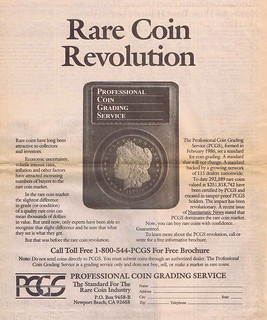 While the numismatic community had long hoped for consistency in grading and fought counterfeits since time unknown, PCGS was the first to do at scale what it does – authenticate coins, provide a consensus-derived grade, and encapsulate these numismatic collectibles in tamper-evident holders. The ingenious concept, the brainchild of seven pioneering coin dealers, has since grown into the world's leading third-party coin and banknote grading service. Today, PCGS has graded more than 45 million coins, banknotes, tokens, and medals worth more than a cumulative $40 billion.
While the numismatic community had long hoped for consistency in grading and fought counterfeits since time unknown, PCGS was the first to do at scale what it does – authenticate coins, provide a consensus-derived grade, and encapsulate these numismatic collectibles in tamper-evident holders. The ingenious concept, the brainchild of seven pioneering coin dealers, has since grown into the world's leading third-party coin and banknote grading service. Today, PCGS has graded more than 45 million coins, banknotes, tokens, and medals worth more than a cumulative $40 billion.
When PCGS launched operations on February 3, 1986, it was a watershed moment for the hobby. And yet, it all started with a dream. PCGS evolved from a book project,
explains company co-founder Gordon Wrubel. Four ‘weekend warrior' coin dealers would meet in a hotel room two or three times a month after the bourse closed to work on our book. It was envisioned to be the ‘Ultimate Redbook' of U.S. coins and would include prices, transactions (both public and private treaty), rarity ratings, and a condition census. The data was put into a computer and ever-growing reams of paper printouts were compiled and analyzed.
He recalls one of these sessions in 1985 evolving into a discussion of recent developments in the coin market. Several rare coin firms and ‘boiler room' operations were being investigated by government agencies. There were complaints of over grading by investors and collectors. Several of the offending entities were fined, shut down, or both. We were alarmed at these events and feared for the health of the rare coin industry,
says Wrubel.
So, we put our book project on hold and sought out ways to remedy the over grading issues. One member of our group came up with a brilliant proposal: if we agree on the grade of a coin, would the marketplace accept it? ‘Of course,' was our answer. Then the proposer went on to say, 'Why don't WE grade the coins?' We were all confident that we could do that. But what the proposer said next threw us for a loop! 'We should seal the tamper-proof plastic holders and give a dual guarantee of grade and authenticity.' It seemed unconventional at the time,
Wrubel remarks. But after thinking it over, it would be the only way to ensure our guarantees and keep the grades protected from deterioration. The initial participants pooled their money to launch the service.
PCGS Is Born
The company was launched on the concept that coins would be submitted to PCGS through its Authorized Dealers, who would screen coins and then forward them to the company. Originally there were about 30 PCGS Authorized Dealers, with new ones joining on a nearly daily basis, as Wrubel recounts. I came out [to California] that first week to help set up the company and grade whatever coins were submitted. I was scheduled to stay out for one week and return home to Kansas City… But it was not to be. We were overwhelmed with submissions and I ended up staying out for two solid months! In another two months, I had to move my family to California.
Wrubel says he and the PCGS team were anything but exhausted by the heavy workload early on. We were exhilarated by the marketplace acceptance of our service. Early on, not knowing how many submissions we would receive, we decided to run a special. So, for the month of May, we pre-advertised a $15 submission fee.
And the submissions came pouring in. A high percentage of our early submissions were Morgan Dollars, but there was a mix of everything, especially gold coins, because of our guarantees of grade and authenticity,
he remembers. The program was such a success that we were over-subscribed. In the next few months, we had many more dealers coming on board.
Soon, the graders had more than 150,000 coins waiting for their consensus grades. We called it ‘The Wall.'
PCGS had to quickly expand its team of graders. As director of grading, I called all my contacts whose grading skills I trusted,
Wrubel notes. They came from all over the country for a week, two weeks, a month, as much time as they could be away from their family and businesses. At one time, I had 38 graders on staff and opened a satellite grading facility. We rented apartments out here to house the out-of-towners.
Adds Wrubel, We eventually broke through ‘The Wall.'
To read the complete article, see:
PCGS 35 Years On
(https://www.pcgs.com/news/pcgs-35-years-on)
COIN BOARDS: RATION TOKENS, GHOSTLY TONING
In the Spring 2021 issue of Coin Board News, Dave Lange notes recent research assistance from E-Sylum readers and gives us a nice shout-out. Another item shows some unusual ghostly toning on a coin once stored in a Whitman folder. With permission, we're republishing both items here. Thanks. -Editor
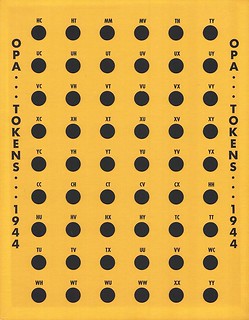 YET ANOTHER FOLLOW-UP In CBN #44 I ran a short piece
about the coin boards produced circa 1970 to hold tokens issued during
World War II by the Office of Price Administration (OPA). I noted that
the creator of the boards was Joseph A. Lawonde, but I knew very little
about him. My story was reproduced in The E-Sylum, a wonderful
online publication that comes out weekly and features news and
reviews of numismatic literature and research. Another reader of The E-Sylum sent me an old flyer put out by the Society of Ration Token
Collectors around the same time as the boards. In it, Joe Lawonde was
revealed as the editor of The Ration Board, the society's quarterly
bulletin, and his address was given as 135 Duer Street in North
Plainfield, New Jersey. The boards were offered for sale at $3 to
members and $4 to non-members, with orders going to A. G. Kressly in
East Stroudsburg, Pennsylvania. The SRTC is still active today, and its
website is linked through the Token and Medal Society:
http://www.tokenandmedal.org/. By the way, The E-Sylum is sent
online for free, and it's my favorite read each week. Write Editor
Wayne Homren at whomren@gmail.com to sign up. Drop my name,
and he may extend my free subscription!
YET ANOTHER FOLLOW-UP In CBN #44 I ran a short piece
about the coin boards produced circa 1970 to hold tokens issued during
World War II by the Office of Price Administration (OPA). I noted that
the creator of the boards was Joseph A. Lawonde, but I knew very little
about him. My story was reproduced in The E-Sylum, a wonderful
online publication that comes out weekly and features news and
reviews of numismatic literature and research. Another reader of The E-Sylum sent me an old flyer put out by the Society of Ration Token
Collectors around the same time as the boards. In it, Joe Lawonde was
revealed as the editor of The Ration Board, the society's quarterly
bulletin, and his address was given as 135 Duer Street in North
Plainfield, New Jersey. The boards were offered for sale at $3 to
members and $4 to non-members, with orders going to A. G. Kressly in
East Stroudsburg, Pennsylvania. The SRTC is still active today, and its
website is linked through the Token and Medal Society:
http://www.tokenandmedal.org/. By the way, The E-Sylum is sent
online for free, and it's my favorite read each week. Write Editor
Wayne Homren at whomren@gmail.com to sign up. Drop my name,
and he may extend my free subscription!
 NATURAL PHENOMENA DEPARTMENT With
this issue featuring an item about my article on Whitman
folders in The Numismatist, this seems like a good
opportunity to run a photo that pertains to that subject.
More specifically, it pertains to the way in which coins
stored in such folders may develop very distinctive toning.
In this instance a 1916-D half dollar stored for many years
inside the Whitman folder for Liberty Standing Half
Dollars (Publisher No. 9021) reacted with its printed end
flap in a most peculiar manner. The letters of the title
actually masked the reactive paper from toning the coin in
stencil fashion, and this resulted in the reversed text
appearing on the coin as untoned metal. I've seen this
selective toning on many coins, and it's particularly
aggressive on ones that were cleaned before insertion into
the folder. What does it say on your coins?
NATURAL PHENOMENA DEPARTMENT With
this issue featuring an item about my article on Whitman
folders in The Numismatist, this seems like a good
opportunity to run a photo that pertains to that subject.
More specifically, it pertains to the way in which coins
stored in such folders may develop very distinctive toning.
In this instance a 1916-D half dollar stored for many years
inside the Whitman folder for Liberty Standing Half
Dollars (Publisher No. 9021) reacted with its printed end
flap in a most peculiar manner. The letters of the title
actually masked the reactive paper from toning the coin in
stencil fashion, and this resulted in the reversed text
appearing on the coin as untoned metal. I've seen this
selective toning on many coins, and it's particularly
aggressive on ones that were cleaned before insertion into
the folder. What does it say on your coins?
Thanks to Dave's publicity, we did pick up a couple new subscribers. To subscribe to HIS great newsletter (one of MY favorite reads), contact him at DavidWLange@outlook.com -Editor
For more information, see:
https://www.coincollectingboards.com/
INTRODUCING THE ANS LYCEUM
The ANS Lyceum is a new online educational offering from the American Numismatic Society. The program is open to all. -Editor
The ANS Lyceum: New Online Educational Program to Begin March 31
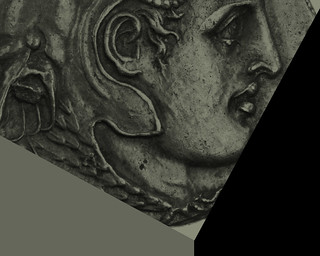 The American Numismatic Society (ANS) announces the ANS Lyceum, a new online educational program. Over the course of several weeks, participants will have the opportunity to engage in interactive lectures and discussion sessions with ANS curators who will introduce the coinages, economic history, and cultures of people from around the world and from different periods of history. The ANS Lyceum is open to all with no prior knowledge of numismatics or history required or expected.
The American Numismatic Society (ANS) announces the ANS Lyceum, a new online educational program. Over the course of several weeks, participants will have the opportunity to engage in interactive lectures and discussion sessions with ANS curators who will introduce the coinages, economic history, and cultures of people from around the world and from different periods of history. The ANS Lyceum is open to all with no prior knowledge of numismatics or history required or expected.
In the first offering from ANS Lyceum, Chief Curator Peter van Alfen will lead a six-week course that explores the coinages of the ancient Mediterranean world, from the Archaic period to the end of the Hellenistic period (ca. 650–30 BCE). These sessions will be held every Wednesday between 12:30–2:00 pm (EST) starting on March 31, 2021 and ending on May 5, 2021. Topics include ancient mints, the earliest electrum coinage, and Greek, Persian, and Hellenistic numismatics. The second offering from the ANS Lyceum, a course on Roman coinage taught by Assistant Curator of Roman Coins Lucia Carbone and Executive Director Gilles Bransbourg, will begin in late May 2021.
Tuition for the first six-week course is $250.00 for non-members; tuition for members of the ANS is $100.00. Join the ANS today at numismatics.org/membership/ to receive the member rate. Prospective students can register for the course with Austin Goodwin Andrews at aandrews@numismatics.org. Scholarships are available.
Registration for the first course of the ANS Lyceum is already closed. Fill out the form on the site to be included on the wait list and receive updates on future courses of the ANS Lyceum. Student numismatists - be sure to ask about the scholarships. -Editor
To read the complete press release, see:
Press Release: The ANS Lyceum
(http://numismatics.org/press-release-the-ans-lyceum/)
For more information, see:
ANS Lyceum
(http://numismatics.org/lyceum/)
NUMISMATIC NUGGETS: FEBRUARY 21, 2021
Here's a selection of interesting or unusual items I came across in the marketplace this week. Tell us what you think of some of these. -Editor
1847 Award Medal by Christian Gobrecht
1847 Massachusetts Charitable Mechanic Association Award Medal. By Christian Gobrecht. Harkness Ma-70. Silver. Very Fine.
38.5 mm. 31.9 grams. Central reverse inscribed to the recipient ROBT. BACON & SONS / FOR SUPERIOR / FELTING. / EXHIBITION / OF / 1847.
Provenance: From the Steve M. Tompkins Collection. Collector tag with attribution notation included.
Great U.S. Mint engraver piece. From the Stack's Bowers March 2021 Numismatic Americana Auction. -Editor
To read the complete lot description, see:
1847 Massachusetts Charitable Mechanic Association Award Medal. By Christian Gobrecht. Harkness Ma-70. Silver. Very Fine.
(https://auctions.stacksbowers.com/lots/view/3-Q8HK0/1847-massachusetts-charitable-mechanic-association-award-medal-by-christian-gobrecht-harkness-ma-70-silver-very-fine)
Pakistan State Bank 10 Rupees Haj Issue
Extremely Rare Haj Pilgrim Issue
PAKISTAN. State Bank. 10 Rupees, ND. P-R2. PMG Very Fine 30.
An incredibly rare note from one of the most heavily sought after issues of paper money. This example is one of only 7 graded examples on PMG's population report and among the finest we have handled. Shalimar Gardens found at center. Overprint at center that reads FOR HAJ PILGRIMS FROM PAKISTAN FOR USE IN SAUDI ARABIA in black. On incredibly special issues like this, there is always more collectors than there is supply so we therefore believe our estimate to be conservative and as such, we anticipate spirited bidding.
Interesting overprinted note. Great history. From the Stack's Bowers April 2021 Hong Kong sale. -Editor
To read the complete lot description, see:
PAKISTAN. State Bank. 10 Rupees, ND. P-R2. PMG Very Fine 30.
(https://auctions.stacksbowers.com/lots/view/3-Q9FEC/pakistan-state-bank-10-rupees-nd-p-r2-pmg-very-fine-30)
China Banknote Printing & Minting Museum Tickets
CHINA--PEOPLE'S REPUBLIC. Banknote Printing & Minting Museum. ND (2002). P-Unlisted. Commemorative Tickets. PMG Gem Uncirculated 66 EPQ & Superb Gem Uncirculated 67 EPQ.
2 pieces in lot. A duo of commemorative tickets from the China Banknote Printing & Minting Museum. Both display attractive paper with vivid ink.
Colorful item, also from the Stack's Bowers April 2021 Hong Kong sale. Interesting fine print, reprinted below. -Editor
On September 1, 2019, the United States enacted new tariffs on collector's items of Chinese origin, including bullion and numismatic coins and banknotes. This lot was manufactured in China and was sourced from outside the United States for this auction after the tariffs were enacted. Accordingly, any client who wishes to take delivery of this item within the United States will be subject to a 7.5% import tariff plus a processing fee of 0.3464% (minimum $26.79 / maximum $519.76). Please note, this is not, and is not intended to be, a complete description of the applicable import tariffs and buyer remains fully liable for and agrees to promptly pay all tariffs and fees relating to the import of these items into the United States and neither the auctioneer nor any consignor will have any responsibility to pay any applicable tariffs or fees. Please consult your tax adviser with any questions.
Furthermore, any lots subject to an import tariff will be shipped directly from our Hong Kong offices and shipments to the United States will be subject to our international shipping chart.
To read the complete lot description, see:
(t) CHINA--PEOPLE'S REPUBLIC. Banknote Printing & Minting Museum. ND (2002). P-Unlisted. Commemorative Tickets. PMG Gem Uncirculated 66 ...
(https://auctions.stacksbowers.com/lots/view/3-Q9E2J/t-china-peoples-republic-banknote-printing-minting-museum-nd-2002-p-unlisted-commemorative-tickets-pmg-gem-uncirculated-66-)
ALASKAN RUSSIAN-AMERICAN WALRUS SKIN
MONEY
Here's a press release about the Alaskan Walrus skin notes offered in the upcoming Kagin's sale. Great items! -Editor
FINEST COLLECTION OF ALASKAN RUSSIAN-AMERICAN WALRUS SKIN
MONEY FEATURED IN KAGIN'S MARCH 11-12 AUCTION
Believed to be the finest collection of Alaskan Russian-American walrus skin
Money is being offered in
Kagin's March 11-12, 2021 Auction on-line and live in the San Francisco Bay area. The Joe Usibelli
Collection of six of these rare notes, plus an additional note includes some of the finest examples of
these early and mid-19th century banknotes. The offering is tied for the third largest ever.
Highlights include 10 Kopecks PMG NEW-61 Ex: John J. Ford, Jr. Collection; 25 Kopecks PMG NEW-62; 50 Kopecks PMG VERY CHOICE NEW-63; one of two known 1 Rouble on aqua-green parchment graded PMG Extremely Fine-40 tear repair Ex: Henry Clifford Collection; and 1 Rouble on mustard colored parchment PMG graded AU-50 Ex: Henry Clifford, John J. Ford, Jr.
Russian-American Company Walrus Skin
money appeals to U.S. currency collectors, world paper
money buyers, Alaskan, California and Russian collectors, and Odd & Curious/ Primitive Money
collectors.
As early as 1741 Alaska had become part of Russia's land holdings and by 1790 the local fur trading industry flourished.
In 1799 Czar Paul I purchased shares in the semi-autonomous Russian-American Company, to monopolize on the trade in Russian America. By 1811 their holdings eventually encompassed parts of California as far south as Fort Ross.
A major aspect of the fur trading Russian-American Company enterprise consisted of shipping otter and seal skins to China in waterproof bags made of walrus leather skins. The bags were reused to wrap shipments of various spices bound for Russian ports. In 1816 select pieces to be cut from the walrus bags and stamped with seven different values including 10, 25, and 50 Kopeks, and 1, 5, 10 and 25 Roubles to pay colonial employees and facilitated commerce. Other issues were printed in 1822, 1826, 1834, 1842, 1845 and 1852 although according to the cataloger less than 50 of these notes are currently extant.
The entire 408 page catalog can be viewed on-line at www.Kagins.com or call 888-8KAGINS(852-4467).
HENRY VII'S MODERN TRIMMED BEARD
This article published today by Allan Davisson highlights an unusual coin in the upcoming Davisson's sale. -Editor
Renaissance portraiture comes to English coinage
The reign of the first of the Tudor kings, Henry VII, was well along before realistic portraiture became a part of the English series. Fine portraiture on coinage had appeared in Renaissance Europe several decades earlier, but other than the 1484-1488 issue of Scotland's James III with its striking long-haired half-left-facing-bust, realism did not appear in British coinage until 1504 with a testoon and a groat.
The new type of coinage was in part a response to the clipping common with the facing bust issues, and apparently in or about 1504 Henry VII is reported to have ordered a new coinage, with his portrait, to be impressed.
At the same time, the world was changing—the Renaissance saw an explosion of exploration by Columbus and Magellan, and a revolution in art by Michelangelo and da Vinci, and this realistic approach to the design of English coins was probably seen as well past due.
This piece in our current sale is a remarkable example of the tentative issue,
a coinage meant to test acceptance, to prepare the way for a major shift in coinage style. The facing bust issues continued for a while as this new approach to design was being gradually introduced (for comparison, see the last of the medieval facing bust issues in lot 144). In addition to the profile bust, the key design feature is a crown with two bands. When the coin design became fully adopted, the crown was given three bands around the head.
This particular piece occasioned a bit of excitement from a knowledgeable collector and client who observed the unique nature of what appears to be a mustache and beard that extends along the lower cheek and jawline—much like many modern trimmed beards. Would that it were so! There was a brief experiment with the design of the coin when tressures around the portrait were added, but it was unappealing and only four examples of that design survived.
A bearded piece? No. After extensive study of the published dies and close inspection of the coin with my binocular microscope, I have decided that the beard is the effect of a die break on a known die.
But when you think about it, it would have made an even more handsome bit of art on a coin. And it would have predated by 40 years the full bushy beard that depicts the aging Henry VIII.
Nonetheless, this is a spectacular example of a rare and important coin issue.
To read the complete lot description, see:
Lot 145 Early Renaissance profile bust
(https://davcoin.com/lot/printed-auction-40-lot-145)
For more information on the upcoming sale, see:
https://davcoin.com/
SHELL BEAD MONEY IN CALIFORNIA
A university of California archaeologist says shells were used as currency on the Southcentral Coast of Santa Barbara as long as 2,000 years ago. -Editor
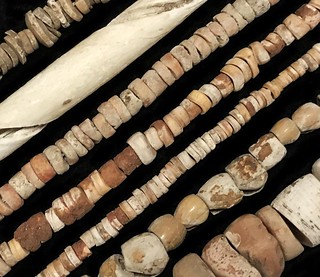 As one of the most experienced archaeologists studying California's Native Americans, Lynn Gamble knew the Chumash Indians had been using shell beads as money for at least 800 years.
As one of the most experienced archaeologists studying California's Native Americans, Lynn Gamble knew the Chumash Indians had been using shell beads as money for at least 800 years.
But an exhaustive review of some of the shell bead record led the UC Santa Barbara professor emerita of anthropology to an astonishing conclusion: The hunter-gatherers centered on the Southcentral Coast of Santa Barbara were using highly worked shells as currency as long as 2,000 years ago.
If the Chumash were using beads as money 2,000 years ago,
Gamble said, this changes our thinking of hunter-gatherers and sociopolitical and economic complexity. This may be the first example of the use of money anywhere in the Americas at this time.
Although Gamble has been studying California's indigenous people since the late 1970s, the inspiration for her research on shell bead money came from far afield: the University of Tübingen in Germany. At a symposium there some years ago, most of the presenters discussed coins and other non-shell forms of money. Some, she said, were surprised by the assumptions of California archaeologists about what constituted money.
Intrigued, she reviewed the definitions and identifications of money in California and questioned some of the long-held beliefs. Her research led to The origin and use of shell bead money in California
in the Journal of Anthropological Archaeology.
Gamble argues that archaeologists should use four criteria in assessing whether beads were used for currency versus adornment: Shell beads used as currency should be more labor-intensive than those for decorative purposes; highly standardized beads are likely currency; bigger, eye-catching beads were more likely used as decoration; and currency beads are widely distributed.
Gamble's research not only resets the origins of money in the Americas, it calls into question what constitutes sophisticated
societies in prehistory. Because the Chumash were non-agriculturists — hunter-gatherers — it was long held that they wouldn't need money, even though early Spanish colonizers marveled at extensive Chumash trading networks and commerce.
Recent research on money in Europe during the Bronze Age suggests it was used there some 3,500 years ago. For Gamble, that and the Chumash example are significant because they challenge a persistent perspective among economists and some archaeologists that so-called primitive
societies could not have had commercial
economies.
Both the terms ‘complex' and ‘primitive' are highly charged, but it is difficult to address this subject without avoiding those terms,
she said. In the case of both the Chumash and the Bronze Age example, standardization is a key in terms of identifying money. My article on the origin of money in California is not only pushing the date for the use of money back 1,000 years in California, and possibly the Americas, it provides evidence that money was used by non-state level societies, commonly identified as ‘civilizations.'
To read the complete article, see:
An Ancient Economy: Chumash Indians Used Currency 2,000 Years Ago
(https://scitechdaily.com/an-ancient-economy-chumash-indians-used-currency-2000-years-ago/)
1794 STARRED-REVERSE CENT OFFERED
A blog article by Stack's Bowers Senior Numismatist and Consignment Director James McCartney highlights a rare starred-reverse cent in the firm's March 2021 sale. I added an image from the April 1905 G.C. Adams sale catalog. -Editor
The Sheldon-48, Starred Reverse 1794 Liberty Cap cent is one of the most popular, eagerly sought, and also enigmatic varieties in the early large cent series. The reason for including 94 stars on the reverse of this variety has been lost to history although, as with so many other aspects of U.S. numismatics, theories abound. Two of the more interesting are attributed to Dr. Edward Maris and R. Coulton Davis, both of which are related in Walter Breen's large cent encyclopedia:
"Dr. Maris had conjectured that the number of stars was meant to allude to the Signers of the Declaration of Independence. Robert Coulton Davis connected it with the Mint Cabinet's 1792 experimental copper coin today called Joseph Wright's pattern quarter dollar (Judd 12, Pollock 14, Encyclopedia 1365), which has 87 stars in the reverse border."
Regardless of the intent of the stars and when and by whom the variety was discovered, the appeal of Sheldon-48 has remained strong throughout the 20th and into the 21st centuries. Its scarcity has also stood the test of time, for today only 60 or so examples are believed extant, the actual total perhaps as low as 50 to 55 coins.
We are thrilled to feature a superior example from these dies in our March 2021 Las Vegas Auction. It is faintly glossy and overall pleasing, despite varying levels of porosity. Most importantly, each of the eponymous stars remains distinct at the reverse denticles, a quality that is only shared by a small handful from these dies. Well struck and bold, the obverse is well centered while the reverse is slightly drawn towards 2 o'clock. Among the finest known, it is tied at CC#9 with the Norweb specimen on the 2006 Noyes census.
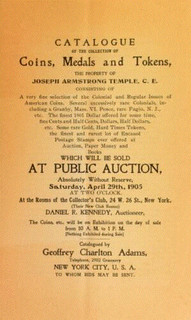 This is an historic example with provenance stretching back more than a century to Geoffrey Charlton Adams' sale of the Temple Collection in April 1905. Even then, it was recognized as a magnificent rarity and was cataloged as "the finest specimen ever offered at auction. Only one better known." In the following decades, it passed through the hands of several famed numismatists including Henry C. Miller, George French, T. James Clarke, R.E. Naftzger, John W. Adams, and many others. We last had the pleasure of offering this piece in our February 1982 sale of the Robison Collection, where we called it a "splendid Condition Census example." Nearly 40 years later, it remains one of the most desirable survivors from these dies and we are thrilled to present it to a new generation of collectors.
This is an historic example with provenance stretching back more than a century to Geoffrey Charlton Adams' sale of the Temple Collection in April 1905. Even then, it was recognized as a magnificent rarity and was cataloged as "the finest specimen ever offered at auction. Only one better known." In the following decades, it passed through the hands of several famed numismatists including Henry C. Miller, George French, T. James Clarke, R.E. Naftzger, John W. Adams, and many others. We last had the pleasure of offering this piece in our February 1982 sale of the Robison Collection, where we called it a "splendid Condition Census example." Nearly 40 years later, it remains one of the most desirable survivors from these dies and we are thrilled to present it to a new generation of collectors.
To read the complete article, see:
Historic Starred-Reverse 1794 Cent Featured in our March 2021 Las Vegas Auction
(https://www.stacksbowers.com/News/Pages/Blogs.aspx?ArticleID=1794-cent-starred-reverse-march-showcase-2021-auction-stacks-bowers-galleries)
CRYSTAL PALACE MEDALS
Elena Stolyarik published a great article on the ANS Pocket Change blog about the Crystal Palace medals - both the original in London and the one in New York City, both of which met the same tragic end. Here's an excerpt, but be sure to see the complete article online. -Editor
The collections of the American Numismatic Society include many medals pertaining to famous architecture, including some of buildings which have been destroyed since their medallic depiction. Among these are the medals dedicated to the Crystal Palaces of London and New York.
The original Crystal Palace was built in London's Hyde Park in 1851. It was designed and erected by the famous English gardener and architect Joseph Paxton (1803–1865). As head gardener for the Duke of Devonshire, Paxton had already designed and built major greenhouses for his employer. His plan for the Crystal Palace was based on that experience as well as the cruciform shape of Gothic churches.
Construction of this technically innovative building, the largest in the world at the time, took only 17 weeks, because it was assembled from prefabricated modular cast iron columns and beams and standardized glass panes. At times there were 2,000 people working to build it, but it cost less than £180,000 to build—much less than any of the competing designs. It stood 135 feet tall, with a length of 1,848 feet and a ground floor area exceeding 770,000 square feet.
The building was originally created for the Great Exhibition of the Works of Industry of All Nations, the first World's Fair
. Around 25 European and American nations took part in this international show, which exhibited the technical achievements of the industrial era. The Exhibition lasted for 140 days and was visited over 6.3 million people.
London's Great Exhibition became the model for subsequent World's Fairs organized in various countries. In July 1853, New York emulated London's example with its Exhibition of the Industry of All Nations. Like London, New York built a modern structure of cast iron and glass for its exhibition and named it a Crystal Palace. It was designed by the Danish-American businessman Georg Carstensen (1812–1857) and the German-American architect Karl Gildemeister (1820–1869). Constrained by the limited space available, the location that is now Bryant Park in Manhattan, they designed it in the form of a Greek cross with an enormous central dome. When it became clear that the building needed more space for exhibits of machinery, they modified the ground floor to an octagonal shape.
The Exhibition of 1853 in New York was the first World's Fair held in the United States, and it served to promote the achievements of the young nation and its largest city. Thousands of exhibitors presented their consumer goods, artworks, and technological innovations to more than a million visitors.
After the Exhibition closed in 1854, New York's Crystal Palace was used for other events, but unfortunately it met the same fate as its exemplar in London. The building was destroyed in a fire in less than half an hour in 1858.
To read the complete article, see:
CRYSTAL PALACE MEDALS
(http://numismatics.org/pocketchange/crystal-palace/)
PAUL MANSHIP EXHIBIT AT THE WADSWORTH
We've often discussed the medallic work of Paul Manship, known for his sculpture of Prometheus in Rockefeller Center. A new exhibit at the Wadsworth Atheneum Museum of Art explores his career. -Editor
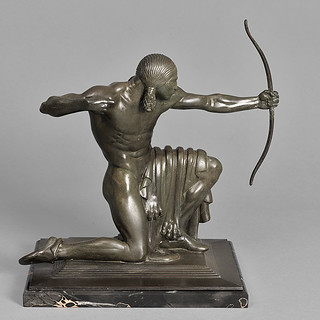 One of the most celebrated American sculptors of the early-twentieth century, Paul Manship (1885-1966) blended ancient motifs to fit modern sensibilities. After studying at the American Academy in Rome (1909-12), Manship returned to New York City, where his dramatic, energetic works in bronze reinterpreted forms, stories, and styles of the past for the modern American age. His streamlined, Art Deco style, and ability to represent his subjects at peak moments of drama attracted critical acclaim, particularly in the 1920s and 1930s. Seen together in this exhibition, his signature bronzes and associated sketches paired with ancient artifacts illuminate how Manship became a master of sampling imagery and melding disparate visual elements from multiple cultural traditions. "Today we call this a mash-up," says Erin Monroe, Robert H. Schutz, Jr., Associate Curator of American Paintings and Sculpture at the Wadsworth. "It's a practice that has permeated popular culture, in music, fashion, and the visual arts, for example." Paul Manship: Ancient Made Modern, the first museum exhibition in 30 years and novel in its examination of this aspect of the artist's work, is on view February 11 to July 3, 2021 at the Wadsworth Atheneum Museum of Art.
One of the most celebrated American sculptors of the early-twentieth century, Paul Manship (1885-1966) blended ancient motifs to fit modern sensibilities. After studying at the American Academy in Rome (1909-12), Manship returned to New York City, where his dramatic, energetic works in bronze reinterpreted forms, stories, and styles of the past for the modern American age. His streamlined, Art Deco style, and ability to represent his subjects at peak moments of drama attracted critical acclaim, particularly in the 1920s and 1930s. Seen together in this exhibition, his signature bronzes and associated sketches paired with ancient artifacts illuminate how Manship became a master of sampling imagery and melding disparate visual elements from multiple cultural traditions. "Today we call this a mash-up," says Erin Monroe, Robert H. Schutz, Jr., Associate Curator of American Paintings and Sculpture at the Wadsworth. "It's a practice that has permeated popular culture, in music, fashion, and the visual arts, for example." Paul Manship: Ancient Made Modern, the first museum exhibition in 30 years and novel in its examination of this aspect of the artist's work, is on view February 11 to July 3, 2021 at the Wadsworth Atheneum Museum of Art.
Organized into three themes, the exhibition examines the influence of the art of the past, on Manship's twentieth-century modern style. Breaking Through in Bronze, looks at Manship's foundational years studying in Italy after winning a prestigious Rome Prize. His artistic path can be rooted in this significant time in his life. Several important loans from the Minnesota Museum of American Art in St. Paul, MN (the artist's hometown), tell the story of his early mastery of bronze, a medium that would define his career. One of the loans, a 1912 sketch of a frieze from the Treasury of Siphnians, in Delphi, reveals an interest in pattern and ornament evident in one of his first fully realized bronzes, the Wadsworth's Centaur and Dryad (1913). This sculpture shows mythological figures mounted atop a base carved in low-relief on all four sides. Along the bands of the base are ornamental details similar to those in the sketch. The dryad's almond-shaped eyes and stylized hair reveal elements Manship adapted from ancient art that would become hallmarks of his work. Early sculptures and drawings by Manship are interspersed with ancient artifacts representative of those he closely studied during his 3-years in Rome and on later travels throughout the Mediterranean, Europe, and Egypt. The form of a Cypriote statue of a standing man, the narrative and ornamental details from Greek vessels such as an Oil Flask (c. 475-460 BCE), and low-relief carving style inspired by an Assyrian relief fragment from the Palace of Ashurnasirpal II (883-859 BCE), all found their way into Manship's sculptures.
To read the complete article, see:
Paul Manship exhibition at the Wadsworth Atheneum examines the artist's conversation with antiquity
(https://artdaily.cc/news/133019/Paul-Manship-exhibition-at-the-Wadsworth-Atheneum-examines-the-artist-s-conversation-with-antiquity#.YCp53WhKhPY)
For more information on the exhibit, see:
Paul Manship: Ancient Made Modern
February 11–July 3, 2021
(https://www.thewadsworth.org/paulmanship/)
To read the Medallic Art Collector entry on Manship, see:
Paul Manship
(http://medallicartcollector.com/paul-manship_biography.html)
To read earlier E-Sylum articles, see:
SCULPTURE REVIEW ARTICLE ON PAUL MANSHIP'S MEDALLIC ASHTRAYS
(https://www.coinbooks.org/esylum_v11n16a09.html)
PAUL MANSHIP'S 1930 HAIL TO DIONYSUS MEDAL
(https://www.coinbooks.org/esylum_v15n02a18.html)
QUIZ ANSWER: MANSHIP'S KULTUR IN BELGIUM MEDAL
(https://www.coinbooks.org/esylum_v15n12a15.html)
MORE ON MANSHIP'S KULTUR IN BELGIUM MEDAL
(https://www.coinbooks.org/esylum_v15n13a09.html)
COMPLETE SET OF MANSHIP ASHTRAY MEDALS OFFERED
(https://www.coinbooks.org/v20/esylum_v20n17a33.html)
THE HISTORY OF DIGITAL CURRENCIES
Here's a new article on the history of digital currencies. The author is Finn Brunton, a professor at the University of California, Davis, and author of the 2019 book Digital Cash. -Editor
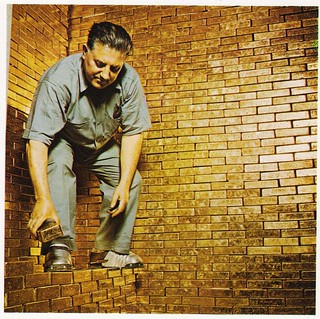 The history of digital cash consists of scientific discoveries from the 1970s, hardware from the 1980s, and networks from the 1990s, shaped by theories from the previous three centuries and beliefs about the next ten thousand years. It speaks ancient ideas with a modern twang, as we might when we say
The history of digital cash consists of scientific discoveries from the 1970s, hardware from the 1980s, and networks from the 1990s, shaped by theories from the previous three centuries and beliefs about the next ten thousand years. It speaks ancient ideas with a modern twang, as we might when we say quid pro quo
or shibboleth
: the sovereign right to issue money, the debasement of coinage, the symbolic stamp that transfers the rights to value from me to thee. Digital cash has the hovering, unsettled realness (not reality) of all money, a matter of life and death that is also symbolic tokens, rules of a game, scraps of cotton blend and polymer, entries in a database, promises made and broken, gestures of affection and trust. The long history we are discussing here is at its heart the history of a debate about knowledge, an epistemological argument conducted through technologies.
It is a debate broadly familiar to anyone who has taken an interest in the nature of money, or even looked idly at a banknote for a bit: how do I know that money is real? I want to phrase the question in this somewhat awkward way to capture how it can be reasonably answered. We can ask it at the level of a particular token of money—how do I know this money is real?—with the feel and texture of a note, the security threads, watermarks, and ultraviolet inks. We can ask it at the level of some type or variety of money, perhaps expressed as a preference for one currency as more solid
than another, for instance, or for cash over credit, or gold over both: how do I know this kind of money is real? Finally, we can ask it at the level of money as such—what is money that it has value for us, and how do we know that value? How do I know that money is real?
I'm sure the reader has already noticed that this set of questions is fundamentally confused: real
sometimes means valuable,
sometimes reliable,
genuine,
or authentic.
They muddle different kinds of knowledge together, from the empiricism of handling cash, to the accumulated experience of shared social norms about money, to beliefs and bets about the future based on all manner of conviction, habit, and hope. They conflate fundamentally unlike things into the category of money.
I hope this very confusion is useful in showing us the kinds of realness that co-exist in even ordinary cash experience—holding a US twenty-dollar bill, for instance, with its ostensible realness scaling up from your fingertips all the way to the stable monetary sovereignty of the nation, however distant it may be. I want us to dwell on this, because attempts to resolve these uncertainties (what do you mean by money, by real money, by valuable money?) constitute the long history of digital cash. How do I know that a digital object is unique—that it is genuine and not a copy? How do I know that it is worth something? How do I know that any of this is real (and real in what sense)?
The article is more about the philosophy of money itself than the technology, but it does touch on DigiCash, "b-money", Bernard von NotHaus's Liberty Dollar, and Bitcoin exchange Mt. Gox. -Editor
To read the complete article, see:
TRADING IN ATOMS FOR BITS
(https://www.cabinetmagazine.org/kiosk/brunton_finn_11_february_2021.php)
To read the earlier E-Sylum article, see:
NEW BOOK: DIGITAL CASH
(https://www.coinbooks.org/v22/esylum_v22n25a04.html)
THE BOOK BAZARRE
THE ERA OF MILLION-DOLLAR SPORTS CARDS
We've discussed before the rise of sports cards as a hot collectible and investing area. The New York Times published an article about it last week. It was republished by Art Daily with the great headline, "Move over, Honus: A new era of million-dollar cards is here." The classic Honus Wagner baseball card has long brought headlines and record prices, but today "players no longer have to be dead — or even retired — for their cards to sell for astronomical figures." -Editor
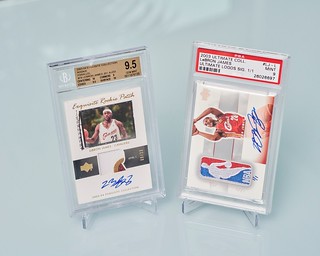
The modern cards are taking the market by storm,
said Chris Ivy, the director of sports at Heritage Auctions. The vintage market is very strong, too, but the modern cards have joined in.
Of the top 10 prices paid for sports cards at public auction, seven were cards of modern stars who were playing as recently as 1999, and five of the 10 cards have players pictured who are still active. The list, however, is ever changing. A rising star card in the collectibles world is an immaculate so-called Logo Man card of Zion Williamson and Ja Morant (the top two picks from the 2019 NBA draft). It can be had on eBay for a cool half a million dollars — just click on Add To Cart.
The industry is at its hottest point in my 40-year history,
Ken Goldin, the founder of Goldin Auctions, said in an email. It is nearly impossible to keep up with demand from buyers.
Ivy said that with the coronavirus pandemic shutting down many businesses, the sports collectibles industry expected hard times, too. But the opposite happened.
It's not something I saw coming,
he said. We, like many businesses, were tightening our belts preparing for a potential downturn, but the fact that we've see so much interest and so many people jumping in the market is a bit surprising.
And the market continues to boil. Earlier this month, a 1997 Michael Jordan card fetched $1.4 million at auction. The soaring prices have created such a frenzy that investment groups are being formed to buy cards, making it harder for individual collectors to compete — even extraordinarily wealthy ones.
The driving force behind the surge in modern card values, Ivy explained, is a new breed of collector, many of whom are similar to Davis — millionaires in their 40s and 50s who see sports cards as both a hobby and an investment. They hunt for the finest cards available, featuring athletes whom they actually watched play, like James, Trout, Jordan and the hockey legend Wayne Gretzky, whose unique 1979 O-Pee-Chee rookie card sold for $1.29 million in December.
The Gretzky card belongs to the older category of cards. It was printed at the O-Pee-Chee plant in London, Ontario, Canada, to be sold in wax packs along with an almost inedible piece of gum, for kids to collect, trade or wedge into their bicycle spokes.
The valuable modern cards are a completely different animal. These packs are not sold by the thousands at candy stores, and no kid is likely to have ever flipped one in the park. The new ones are produced in micro batches, like signature wines, often with a swatch of authenticated uniform fabric affixed to the card, and the player's real signature emblazoned over a flashy chrome design.
Whereas the supply of old cards from baseball's antiquity were culled over time through wear and tear and loss, the newer cards, which date only to the beginning of this century, have scarcity built into them by limiting the supply at the front end.
I got a kick out of the photo of the collector who "brings security to the bank when he visits his LeBron James cards." The two cards pictured are estimated at $7 million. It reminds me of the spectacle of Eric Streiner marching through a coin bourse with a phalanx of security guards after purchasing the Ted Naftzger large cent collection - security theatre as a marketing strategy. -Editor
To read the complete article, see:
These Two LeBron James Cards Are Worth $7 Million
(https://www.nytimes.com/2021/02/18/sports/sports-trading-cards-millions.html)
LOOSE CHANGE: FEBRUARY 28, 2021
Here are some additional items in the media this week that may be of interest. -Editor
In his CoinWeek article February 23, 2021 Mike Markowitz showcases a million-dollar selection of rare Byzantine gold coins. Check it out. "... numismatists can dream, can't they?" -Editor
I collect Late Roman (c. 300-491 CE) and Byzantine (c. 491-1350 CE) gold coins. The tangled histories of these long-dead empires, and the often tragic stories of their rulers, are deeply meaningful to me because I was fortunate to have an inspirational Latin teacher in high school, and some outstanding history professors in college. When I began to collect these coins more than 20 years ago, they were considerably more affordable. Still, the best advice I ever got was, Buy fewer, better coins.
Every serious collector has a wish list
that evolves over time, so I was delighted when CoinWeek asked me to share my Top Ten
.
To read the complete article, see:
Mike Markowitz: Ten Coins I'd Love to Own
(https://coinweek.com/ancient-coins/mike-markowitz-ten-coins-id-love-to-own/)
Portraits of Change: Ancient Coins
Liz Hahn Benge at Art Institute Chicago published a nice article on February 26, 2021 about ancient coinage. -Editor
The portability of coins make them perfect for sharing ideas and transporting images across time and place.
Whether ancient or modern, coins reflect the culture that produced them, including aspects of politics, economics, religion, and even fashion and style. And it's even more of a wonder that such exceptional detail can be communicated on such a small scale. The museum's permanent collection includes more than 1,200 coins, most of which come from ancient Greek, Roman, and Byzantine periods and span the early 6th century BCE through the 11th century CE. Thanks to the amazing craftsmanship of ancient engravers, these coins contain clues about the stories behind their creation and the cities that they represent.
To read the complete article, see:
Portraits of Change: Ancient Coins
(https://www.artic.edu/articles/904/portraits-of-change-ancient-coins)
38th Annual Coin of the Year Nominees
World Coin News has published the preliminary round of nominations for the next Coin of the Year awards -Editor
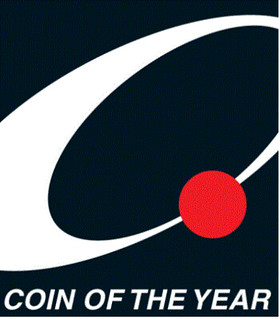 The international panel of Coin of the Year judges have spoken. The first round of balloting was completed Feb. 5 for the 38th annual awards program honoring 2019-dated coins. Presented by World Coin News and sponsored by The Journal of East Asian Numismatics, COTY is an internationally conducted awards program recognizing excellence and ingenuity in coin design.
The international panel of Coin of the Year judges have spoken. The first round of balloting was completed Feb. 5 for the 38th annual awards program honoring 2019-dated coins. Presented by World Coin News and sponsored by The Journal of East Asian Numismatics, COTY is an internationally conducted awards program recognizing excellence and ingenuity in coin design.
A pool of 100 coins from around the world, put forth by the COTY Nominating Committee, were considered: 10 coins each in 10 categories of competition. The winner in each category will go on to the final round in the competition and vie for the prestigious title of Coin of the Year.
Following is a list of these category winners with commentary from Tom Michael, COTY coordinator, World Coin News contributor and market analyst.
To read the complete article, see:
10 Coins Rise to Top in COTY Awards
(https://www.numismaticnews.net/coin-of-the-year/10-coins-rise-to-top-in-coty-awards)
Pinball Hall of Fame Struggles
In the other-hobbies-department, here's a nice Washington Post story on the Las Vagas Pinball Hall of Fame and how it's managing to get by during coronavirus lockdowns. The ...self-contained, fully operational machine gun that uses BBs that ricochet, spark and make a lot of noise
sounds like fun.
-Editor
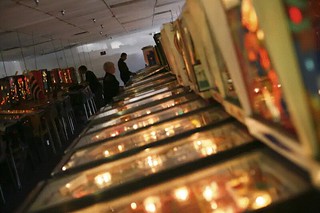 For more than a decade, the Pinball Hall of Fame in Las Vegas has welcomed anyone with a spare quarter — or four — to play hundreds of old bleeping, flashing, flipping, clicking games dating to the late 1940s. Located three miles from the Las Vegas Strip, the quirky arcade/museum has long been worth the cab fare for visiting pinheads. Then the pandemic hit. A government mandate forced it to close for 12 weeks, and then placed limits on capacity. Tourism traffic took a wallop. All told, the Pinball Hall of Fame's revenue is down nearly $500,000 compared with recent years.
For more than a decade, the Pinball Hall of Fame in Las Vegas has welcomed anyone with a spare quarter — or four — to play hundreds of old bleeping, flashing, flipping, clicking games dating to the late 1940s. Located three miles from the Las Vegas Strip, the quirky arcade/museum has long been worth the cab fare for visiting pinheads. Then the pandemic hit. A government mandate forced it to close for 12 weeks, and then placed limits on capacity. Tourism traffic took a wallop. All told, the Pinball Hall of Fame's revenue is down nearly $500,000 compared with recent years.
It's a story that's become all too familiar. Across the country, museums and attractions (along with restaurants, businesses and nonprofits) are struggling. No museum has been able to fully escape the impacts of the pandemic, and it has impacted museums of every type, size and location,
says Laura Lott, president and CEO of the American Alliance of Museums (AAM), which represents museums, science centers, arboretums, gardens, zoos and other cultural institutions.
We're heading for the rocks here,
he says. We need some help. What I need is dead presidents, now.
That's the reality that Arnold is facing right now. If he's not able to pay his mounting bills, then for the Las Vegas Pinball Hall of Fame, it'll be game over.
To read the complete article, see:
Could GoFundMe campaigns save our cultural collections? Las Vegas's Pinball Hall of Fame is banking on it.
(https://www.washingtonpost.com/lifestyle/travel/pinball-hall-of-fame-las-vegas/2021/02/25/0295bac4-6c80-11eb-ba56-d7e2c8defa31_story.html)
THE ROYAL PORTUGUESE CABINET OF READING
For bibliophiles, we'll close with this "Died and gone to heaven" image of the Royal Portuguese Cabinet of Reading. found on Instagram. -Editor
To read the complete article, see:
ancient_origins The Royal Portuguese Cabinet of Reading. Rio de Janeiro, Brazil
(https://www.instagram.com/p/CLrQXUxK1tw/?igshid=be07n6zpy562)
FEATURED WEB SITE: MILITARY MEDALS
This week's Featured Web Site is Jeffrey Floyd's Military Medals, suggested by Paul Horner who writes:
"It is a site of medals & awards for sale, a commercial site. But, looking through it, there are images of hundreds and hundreds of US and world military medals, many rare and wonderful. I am sure it would be of interest to many E-Sylum readers."
Absolutely! And researchers and bibliophiles should enjoy the great selection of new and out of print books on orders, medals and decorations. -Editor


